The post In The Heart of Mezcal appeared first on The Expeditioner Travel Site.
]]>
“This boom started with the hipsters.”
Eber Villalobos guides me down an artfully graffitied street in Oaxaca City, talking about mezcal’s current boom.
“Chilangos (people from Mexico City) come to Oaxaca for vacation and try the mezcales here. Bar owners started bringing mezcal back to the D.F. and made it trendy. It’s partly a way to touch a piece of our history, partly to proclaim Mexican identity and it’s partly a badge of honor. If you bring something rare to the wider public, you get to say I explored this place and look at what I found.”
A former chilango himself, Eber immigrated to Oaxaca five years ago and founded Ánimas Mezcal, a small brand that markets the mezcales made by area distillers, or mezcaleros.
One could hardly find a better place to make mezcal than Oaxaca, nor a better time to do it than now. Oaxaca provides the ideal soil and climate for the agave, known here as magüey, from which mezcal is distilled. The various species of magüey take years to mature and right now the mezcal business booms from so many magüeys maturing within a relatively short time of each other. Rarely have so many mezcal varieties been available and never before has so much mezcal crossed the border to the wider world.
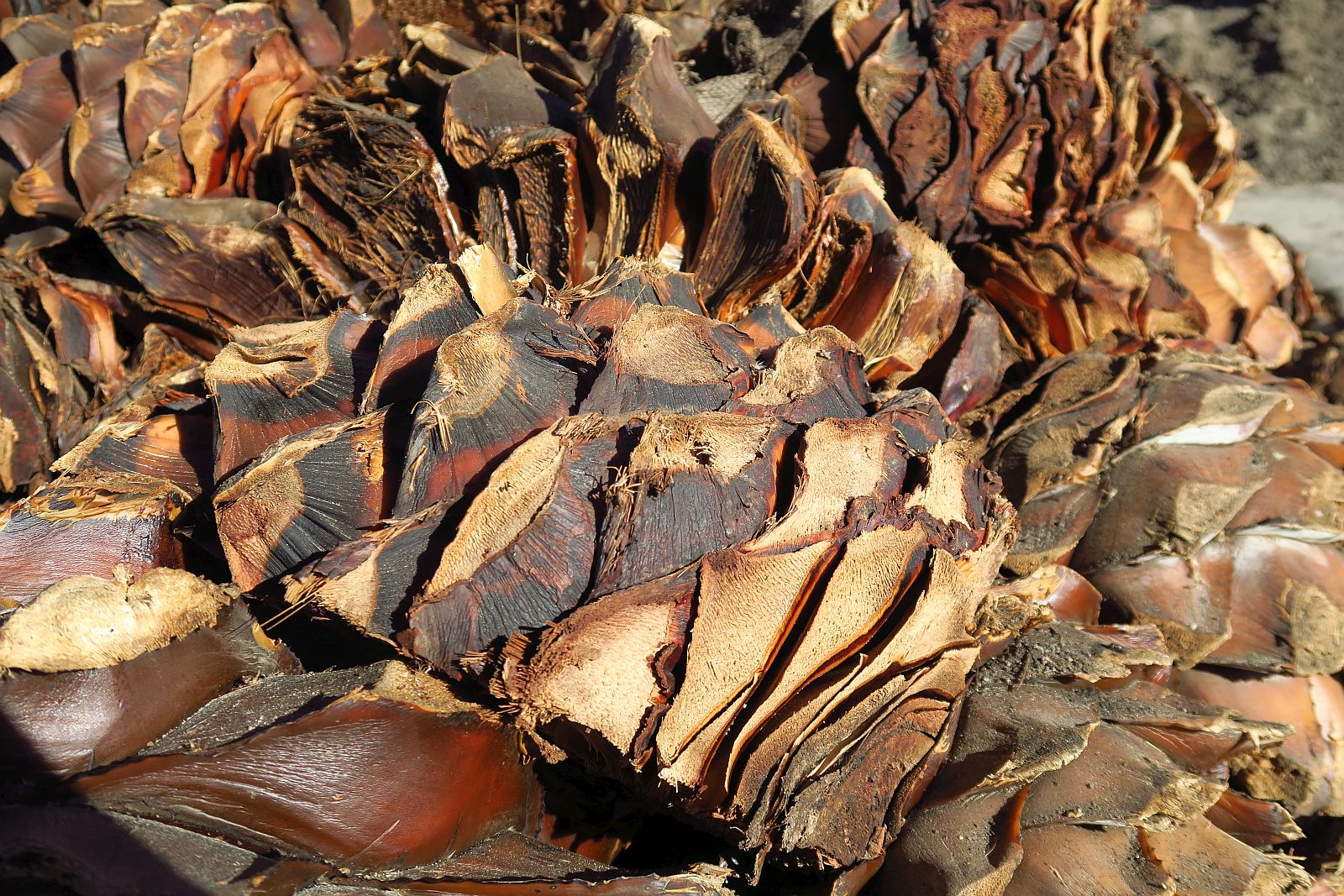
Mezcal wraps its history in myth. The word itself comes from Mexico’s indigenous Nahuatl language and translates rather unceremoniously to “oven-cooked agave.” In its creation myth, a lightning bolt struck a magüey heart, or piña, instantly cooking and releasing the liquor within. Although the magüey had been used by Mexicans to make alcoholic beverages such as pulque for millennia, the first recorded distillation occurred during the Spanish conquest.
During their conquest of Mexico, Spaniards introduced the modern distillation techniques and technologies of the day. Later, mezcal underwent periods of prohibition as Spanish wine producers fought against threats to their profits. During each prohibition, defiant Mexicans continued to make mezcal and the drink acquired both revolutionary and indigenous associations. We are Mexican, proclaimed makers and drinkers alike, not Spanish. Your laws will not break us. We are united and we will rise victorious. History has proven the revolutionaries right, and to raise a glass of mezcal is to raise a fist to imperialism in all its forms.
Mezcal still plays the guest of honor in modern of ceremonies, from weddings to business meetings, to the ofrendas erected outside houses and in cemeteries during the Day of the Dead.
The dull grey ribbon of Highway 190 leads us southeast from Oaxaca City and into magüey-studded hills in which hide dusty towns and villages that look more at home on the pages of a Cormac McCarthy story than on the surface of the world as I have known it.
Eber pulls off at a red-walled single story building situated on the side of the road. Pieces of farm equipment decorate the yard. A pile of corn husks dry in the sun behind a row of decorative magüey plants.
Dainzu, which means “magüey hill” in Zapotec, forms part of the collective that Ánimas represents. Leoncio and Octavia Santiago, Dainzu’s mezcaleros, lean on the open-air showroom’s counter and greet us warmly as we enter.
The first taste that Leoncio pours us is an espadín with a flavor smooth enough to be dangerous.
“This doesn’t taste anything like the mezcal that I’ve tried before,” I remark. “The other mezcal tasted either sweet or smoky, a bit like a scotch.”
“You must have tried it in El Norte,” Leoncio replies. “Americans like scotch whiskey and have grown accustomed to its flavor. When you try something new, you look for something familiar to hold onto. Most mezcales, though, aren’t smoky and Mexicans don’t really look for that flavor.”
Leoncio’s mezcales embody the idea of terroir, a word usually reserved to describe wine. Small glasses of espadín, cuixe, madre cuixe, tepeztate and tobalá take their turns on the counter. They impart flavors of sun-dried earth, dusty and pollen-laden plants and of hands whose palms will never truly free themselves of soil.
Leoncio and Octavia offer us snacks to accompany our drinks. This being Oaxaca, the snacks are chapulines and gusanos de magüey — grasshoppers and tequila worms. Octavia has prepared each dish with her own proprietary techniques and spice mixes. I would have paid handsomely for the recipes, but she says that some things cannot be sold.
“Do you ever put worms in your bottles?” I ask Leoncio.
“Never,” He laughs. “That was an old thing that became a story before it even had a chance to become a tradition.”
Leoncio explains that the worms, in reality, moth larvae, burrow into magüey plants and can ruin the harvest. During some long-gone infestation, magüey farmers took symbolic revenge on the larvae by drowning them in bottles of mezcal. The act never achieved tradition in Mexico, but the story took root north of the border and savvy salesmen play into it where the demand exists.
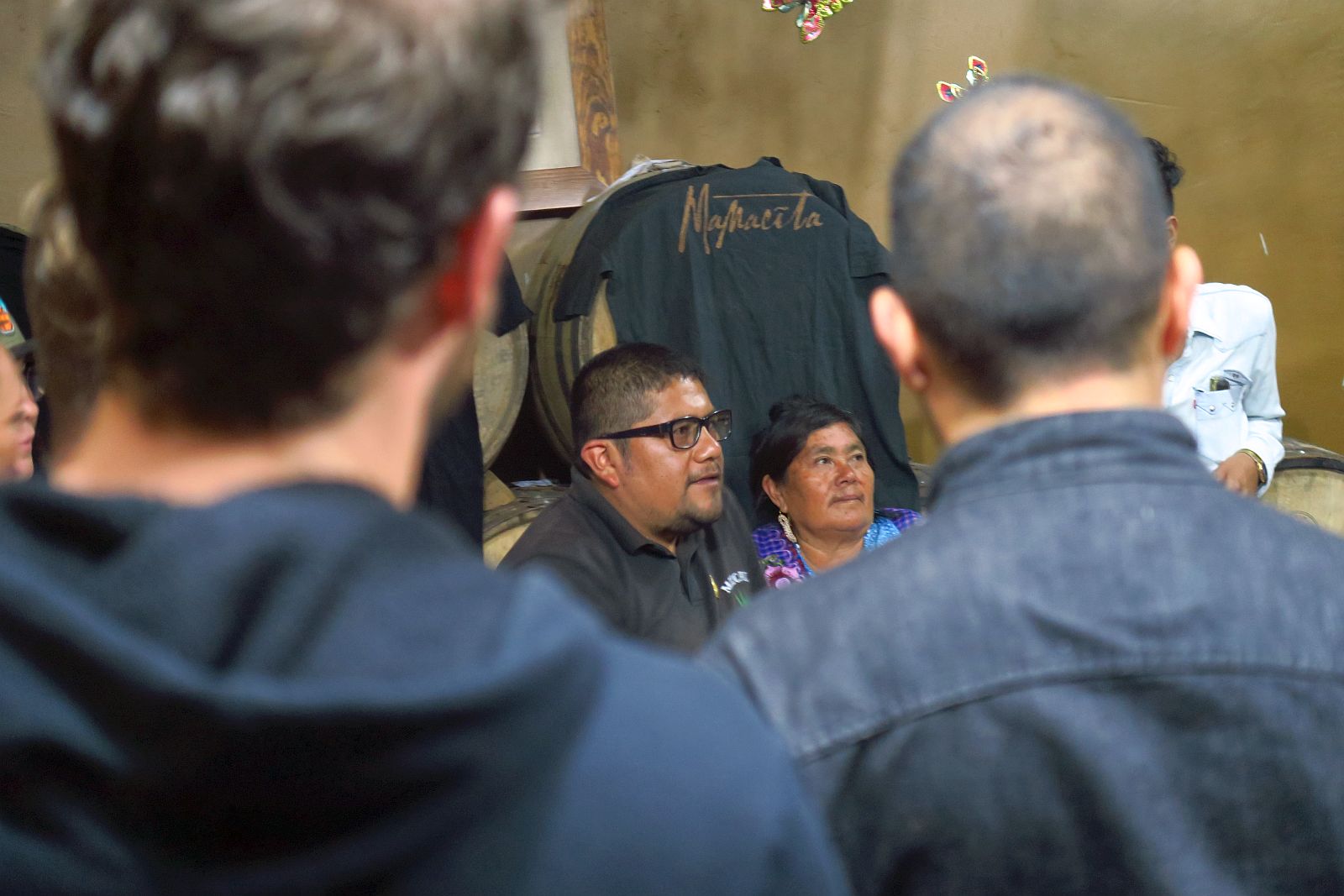
At a goat roast at the Los Javis mezcalería in Matatlan later that night, a restaurateur from Chicago raises a glass to mezcal’s future in the frozen north and to the profits it will bring him. As buttery strips of meat fall from a goat carcass that had spent the day wrapped in banana leaves and slowly roasting beneath the earth, he and his fellow Chicagoans congratulate themselves on mounting the rising tide of mezcal early.
While capitalizing on any trend is best done early, that of mezcal has a particularly narrow window. Mezcal production is limited by the very slow growth of the magüey. The fastest growing magüey, used to make espadín, matures in 8-12 years and those used for the rarer mezcales can take up to thirty years to mature. Add to this the agave’s limited growth area and the reason for rhythmic boom and bust cycles becomes clear.
Javier Hernández, the owner of Los Javis, shrugged when asked if he worried about the eventual demise of the current boom.
“This is the way mezcal has always been. You know, years ago, times were harder and I had to go to the United States to find work. But every Oaxacan dreams of home and as things here improved, I found my way back. Things are good now and during these good times, we have to save our money and invest wisely so that our children don’t have to go so far to make their living.”
“What if your children don’t want to become mezcaleros themselves?” I ask.
“That’s fine. They have to make their own way. And if I save enough from my mezcal business that my children can follow their dreams, then mezcal will still be part of their story.”
“And your mezcalería?”
“There will always be someone to pick up where I leave off. This is Oaxaca. Mezcal is in our blood and in our hearts.”

/
 Forest Ray is a former paratrooper, who now writes about science and travel-related topics. He and his wife currently live in their Subaru Forester, in which they have traveled throughout Latin America for the past two years. His work has appeared in The Ecologist, Verge Magazine, the Earth Island Journal and WanderGoGo.com. He maintains the blog www.42Strong.com.
Forest Ray is a former paratrooper, who now writes about science and travel-related topics. He and his wife currently live in their Subaru Forester, in which they have traveled throughout Latin America for the past two years. His work has appeared in The Ecologist, Verge Magazine, the Earth Island Journal and WanderGoGo.com. He maintains the blog www.42Strong.com.
The post In The Heart of Mezcal appeared first on The Expeditioner Travel Site.
]]>The post An Afternoon At One Of Mexico’s Crazy Wrestling Matches appeared first on The Expeditioner Travel Site.
]]>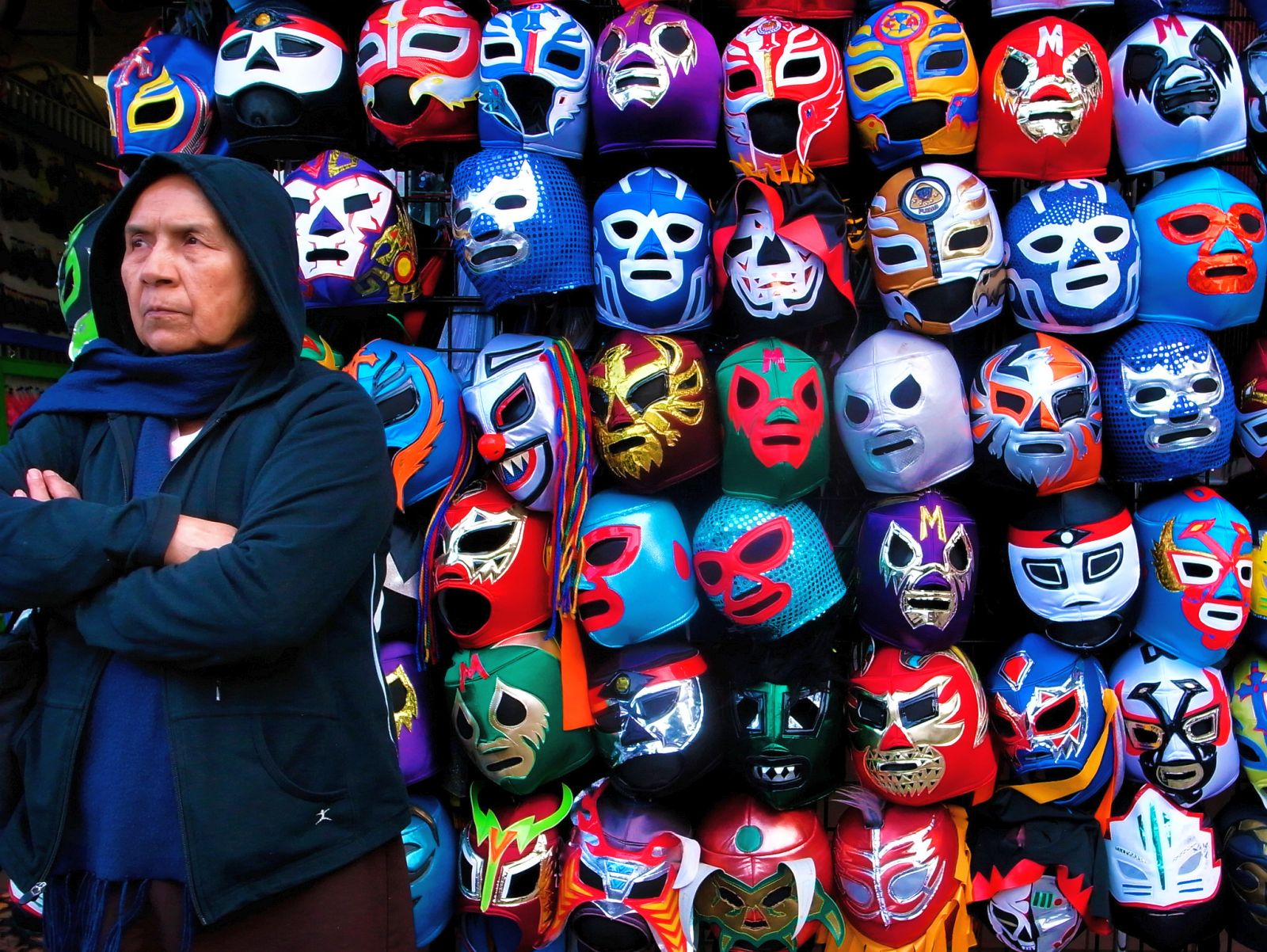
Inside Mexico City’s Arena Mexico, everything was noise and mayhem. The crashing sound of bodies hitting the floor. The loud crack when one wrestler’s ankle impacted another wrestler’s neck. Ear-piercing, guttural shouts from spectators around the room. Bikini girls dancing. The announcer booming. Vendors chanting. Lights flashing. Music blaring.
During the Lucha Libre, there was so much to see and yet nowhere to look because everything demanded my attention at once. Everything was mayhem.
Attending my first Mexican wrestling match, I fought to stay focused on the wrestlers and understand the game, but my eyes darted around the room, distracted by people jumping up from their chairs to shout and vendors coaxing me to buy cotton candy.
My friend Daniel sat next to me, fixated on the ring.
Between matches, he broke focus to explain that he and his brother had been wearing Speedos to bed since they were children because they idolized Mexico’s infamous wrestling scene so much, as many children in Mexico do. I asked him whether or not he still sleeps in Speedos; there was a long pause before he shook his head and looked away with a coy smile. Daniel is over 30 years old and a pretty bad liar.
As he spoke, I looked around the arena and spotted fathers with their mask-and-cape wearing children hoisted up on their shoulders. The children also waved miniature Lucha Libre dolls in the air and cheered as loudly as anyone else in the stands, if not louder. It’s pretty surprising when you hear a three year-old scream, “kill him!” Not in this realm, though.
To those foreign to the game, the rules and antics of Lucha Libre make very little sense if you don’t at least know the basics before you attend.
As I watched, one wrestler sprinted at full-speed across the ring then dove into the ropes, rebounded, tucked and rolled, rebounded again off the ropes on the other side of the ring, front flipped, then from the air managed to lock his ankles around another wrestler’s neck who then spun him around in a circle before throwing him to the floor. At another moment, someone climbed up on the ropes in the corner of the ring, back flipped off the edge of the platform, and landed on the shoulder of another wrestler below. This is why my friend told me as a spectator not to sit in the first couple of rows: bodies sometimes come flying over the rails, smacking audience members in the face, or worse.
In the midst of all the tumbling, a duo of costumed midgets entered the ring, one of them dressed as a white toga-wearing fuzzy blue monkey and the other as an eagle. Suddenly, when a wrestler fell off the side of the ring, the blue ape midget did a flying squirrel off the edge to belly flop on top of him. The crowd went insane. Then, the midget climbed back into the ring, ran up to the other midget, and pushed him down. When he turned around to cheer with his hands raised in the air, the other midget got up and kicked him full-force in the back, sending him flying across the ring where he landed face down at the feet of a wrestler who body slammed on top of him.
Reminder: none of the midget tomfoolery has anything to do with anyone winning the match, which is exactly why I felt lost.

I turned to Lucha Libre commentator Julio Rivera to try to understand the game.
Basically, he explained, there are two teams: the good guys versus the bad guys. Los técnicos are the good guys and they play according to the rules versus los rudos are the bad guys and they play dirty. People cheer equally for both sides.
Typically, the match is comprised of around six fighters (three from each team), but that’s where things get confusing. Unlike American wrestling, a fighter doesn’t have to tag their partner into the ring to fight one at a time, instead they just come and go as they please. So, there might be multiple people fighting each other at the same time inside and outside of the ring.
“This is a cathartic performance,” Rivera explained. “It’s more than just fandom. When someone sees Caristico [one of the most famous Lucha Libre wrestlers] attack an evildoer, you feel as if you were attacking your boss, or a friend that’s been bothering you.”
Just like wrestling in the United States, a match is won by pinning someone down for a count of three. In Lucha Libre, though, there are also a number of automatic disqualifications that can end the game, like ripping someone’s mask off.
It’s so important for a luchador to keep his identity disguised, there are rumors that some famous wrestlers even wear their masks in public during casual jaunts to the movies or to the grocery store.
“People often say they like a certain wrestler because they are cool or because they like their mask, but I believe that it’s more than that,” Rivera said. “When ‘your wrestler’ appears, there’s something about them that represents something you’d like to be. When they are in the streets, they are just any other person, but when they are in the ring with their masks on they become something more.”
Let’s be honest: when you’re there for catharsis and are yelling for both teams, who wins doesn’t matter so much, especially since sometimes it’s hard to tell who wins and why at all.
At the very end of my match, all of the wrestlers were in the ring throwing each other around when suddenly I heard the referee call it. Just like that, the match ended, a team got booed off stage, and everyone inside the stadium started to quickly file out of their seats at the same time.
“Wait, what happened? Who won?” I asked Daniel.
“Oh, someone ripped another person’s mask off, which disqualified them. So the match is over,” he said.
“Oh,” I shrugged. It was a very anticlimactic ending to it all.
So I joined the line of masked revelers from the audience filing out the door, looked around at all the people still cheering, and felt very happy to be leaving in one piece because I did not sit in the front row.

Want to master a couple self-defense moves from some of Mexico’s city most famous Lucha Libre fighters? Watch this video of writer Megan Snedden hopping into the ring with Luchadores Místico and Caristico.
[Lucha Libre by antifluor/Flickr; Lucha Libre 2 by Megan Snedden]
/
 Travel writer and photographer Megan Snedden once wore a mask through a Taco Bell drive-thru, which fueled her cultural fascination with costumed performers. Follow her on Instagram at @MeganSnedden, or read her stories at MeganSnedden.com.
Travel writer and photographer Megan Snedden once wore a mask through a Taco Bell drive-thru, which fueled her cultural fascination with costumed performers. Follow her on Instagram at @MeganSnedden, or read her stories at MeganSnedden.com.
The post An Afternoon At One Of Mexico’s Crazy Wrestling Matches appeared first on The Expeditioner Travel Site.
]]>The post TBEX 2014 Is Heading To Cancun appeared first on The Expeditioner Travel Site.
]]>
It’s official, TBEX North America 2014 is heading to Cancun and will take place from September 11 -14. It was recently announced that TBEX North America 2014, the world’s largest conference for travel bloggers, is heading south of the border (the U.S. border that is) to Cancun, Mexico, this year, this after being held in Canadian locations two of the last three years (Vancouver and Toronto in 2011 and 2013 respectively; Colorado in 2012).
Though rumors surfaced earlier this year in February that the conference was going to be held in Las Vegas after a blog post on the TBEX web site was inadvertently published, it appears that after winnowing the selection down to three potential locations, Cancun was chosen. A Louisiana location, reportedly Baton Rouge, was set to be announced shortly after last year’s conference in Toronto, but concerns about the proposed venue’s Wi-Fi capabilities caused the deal to fall through.
Having traveled to Cancun myself in 2012 with a healthy dose of skepticism beforehand, I can safely say that Cancun is much more than hotels and spring break, and I was pleasantly surprised at how much the region itself had to offer for travelers. Nearby sights including Chichen Itza, Playa del Carmen, Tulum, Isla Mujeres, downtown Cancun and the area’s numerous cenotes will likely be offered as related trips before and after the conference.
The conference itself will be held at the Moon Palace Golf & Spa Resort, about 18 miles south of the well-known “Hotel Zone” (or an approximately 30-minute drive to the center of that area, which, unofficially, is Coco Bongo at last check).
Upon hearing of the news, the mood around TheExpeditioner headquarters was one of general approval and contentment, with one staffer responding when learning of the news, “Cool, I like the beach.”

/
 Matt Stabile is the founder and Editor-in-Chief of TheExpeditioner.com. You can read his writings, watch his travel videos, purchase the book he co-edited or contact him via email at any time at TheExpeditioner.com.
Matt Stabile is the founder and Editor-in-Chief of TheExpeditioner.com. You can read his writings, watch his travel videos, purchase the book he co-edited or contact him via email at any time at TheExpeditioner.com.
The post TBEX 2014 Is Heading To Cancun appeared first on The Expeditioner Travel Site.
]]>The post Burning Calories And Rubber In The Heat Of Oaxaca appeared first on The Expeditioner Travel Site.
]]>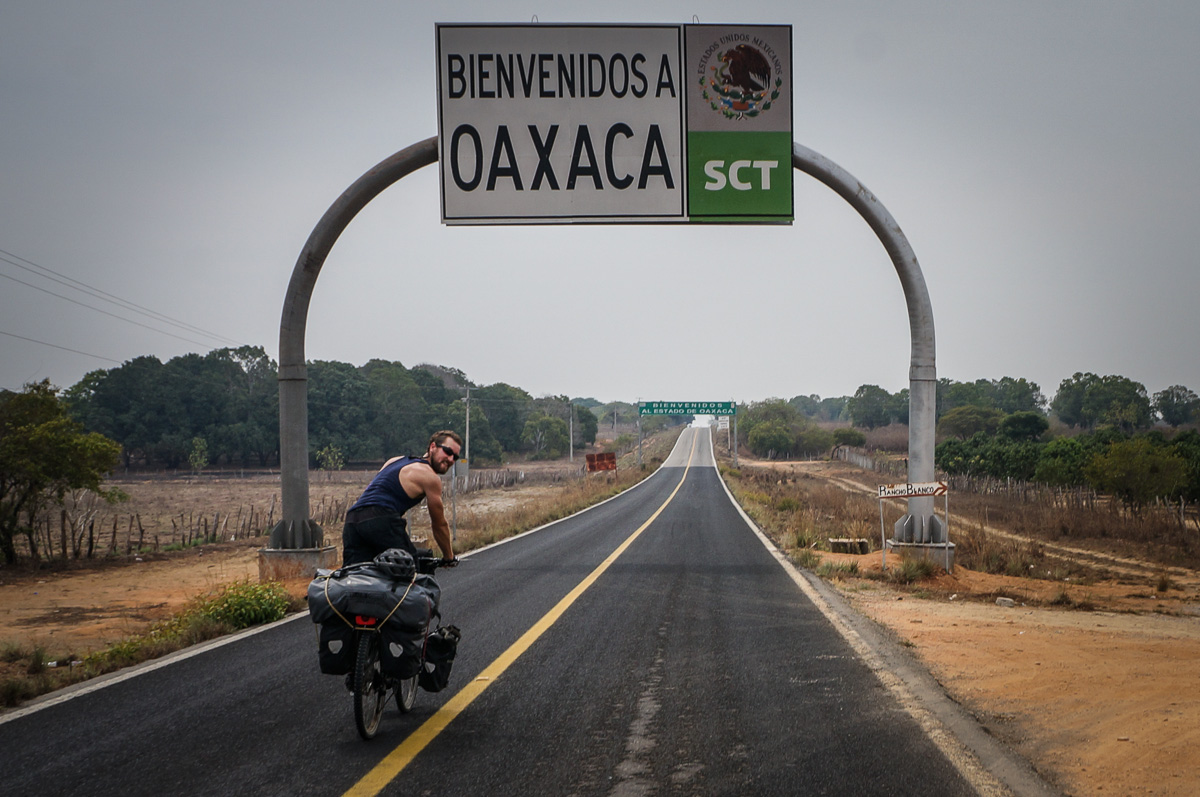
Bicycle touring is an amazing way to travel but it can be slow-going. Our Journey started in Mexico with the plan to pedal south through Central and South America. I imagined cycling would be a romantic way to travel; avoiding the bus schedule we could be free as birds, not to mention feeling fit and healthy from all the exercise. In some instances this was the case but, with all travel plans and itineraries, it can take you by surprise.
Here’s a flavor of our journey along the Oaxacan coast.
We crossed the Oaxacan border like a couple of marinated chickens going into a fan-assisted oven. It was as if a thermostat was wired in at the state line. Perhaps the locals turned it up when they saw two sweaty gringos on fully loaded bicycles; the people of Oaxaca after all have a great sense of humor, and the maize-laden donkey must have felt we had our just deserts.
We pedaled along a quiet, meandering road. It was scorched on either side. The remains of burnt trees offered zero shade in the heat of the day. We should have stopped in the tiny village where the shopkeeper was offering frozen yogurts for five pesos and taken some time to cool down, but our over-cooked common sense had other plans. It urged us to continue the ascending road, towards the grey splodge on the GPS signaling another town 9 miles away.
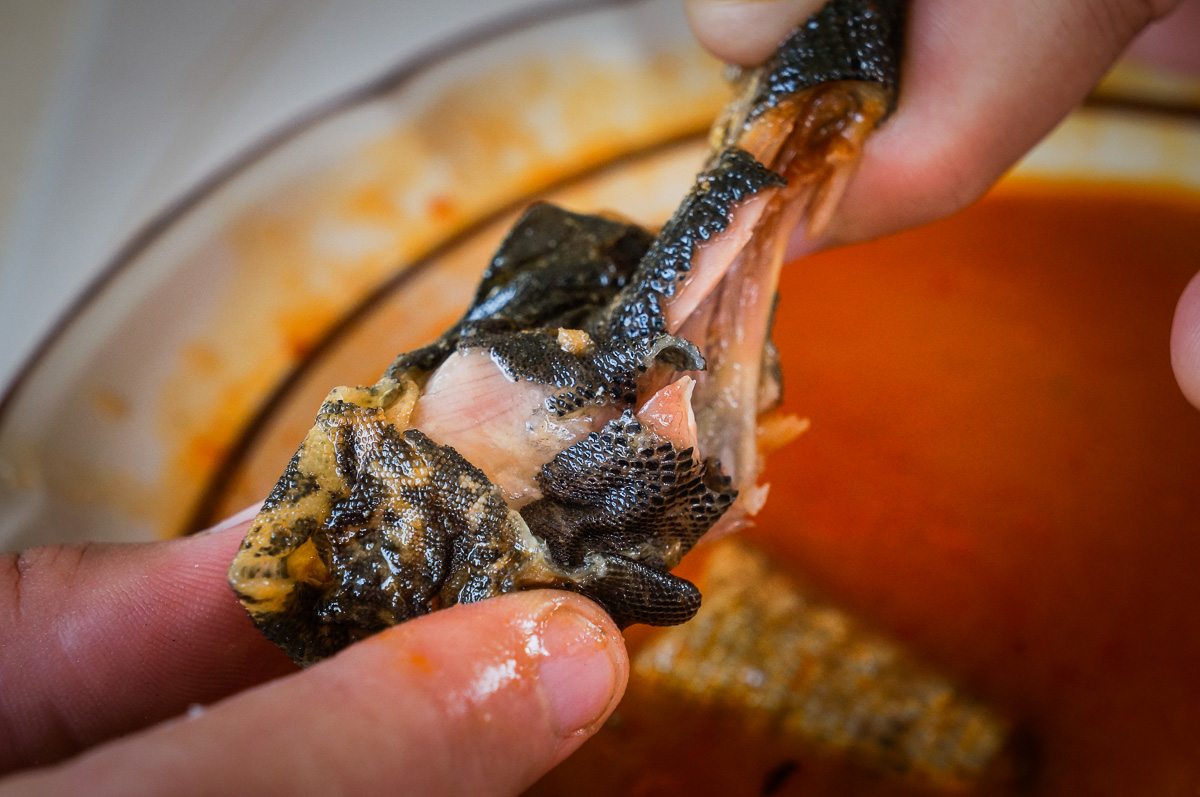
It was here where we had our first experience of eating excellent local Oaxaqueñan cuisine. At the little cocina economica, we ordered iguana soup. Like most of these small, family-run businesses in Mexico, it is sponsored by the sugar giant, Coca Cola. The “fridge police” actually turned up just as we were chowing down. He inquisitively glanced at our delicious jug of homemade mango agua fresca while we mopped up our amarillo with steaming hot tortillas.
The Oaxacan coastline is as rich as the Oaxaqueñan culture; the ocean waves unpredictable, like the heat of their salsa. The small coastal village of Mazunte had its red flag up on the beach half the time we were there. The weather patterns were whirling around as a result of Hurricane Barbara bounding her way through Southwest Mexico and Guatemala.
We stayed with a local family in Mazunte, trading our bikes for books to study Spanish at El Instituto Iguana. Everyday for two weeks we ate three meals cooked by our host, Mamma Doña Sara, including massive breakfasts of huevos a la Mexicana (spicy scrambled eggs with cheese), chilaquiles (day-old tortillas simmered in salsa) and occasionally caldo de pescado (fish soup). Every dish was served with obligatory frijoles (beans), tortillas and salsa. Lunch and dinner alternated with simple carne dishes served with rice and beans, tuna, nopales (cactus), a variety of caldos and the incredibly rich, mole de pollo.
Mole de pollo is a local speciality in Oaxaca. It’s traditionally made for special occasions like the Día de Muertos (Day of the Dead). The taste of chocolate and smoky chipotles envelope your taste buds with each bite. It’s no wonder they cook this dish when it’s time to celebrate.
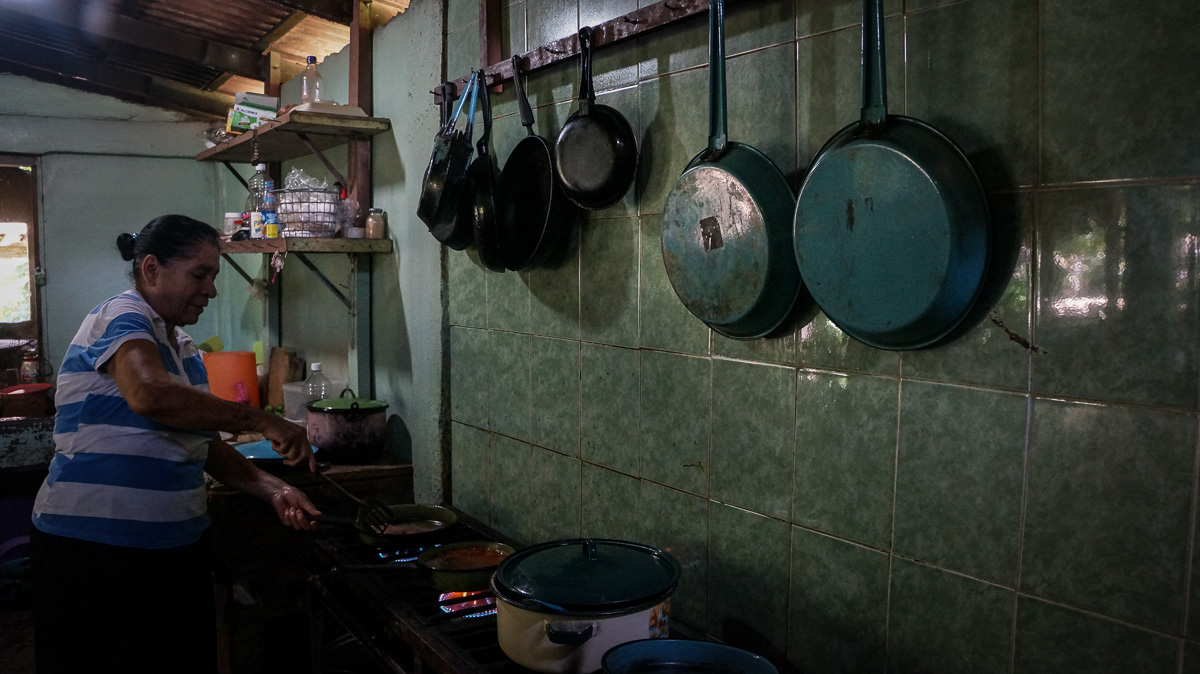
Our host, Doña Sara, was a traditional Oaxaqueñan woman. A mother of seven and a wife of nearly 40 years, her life is at home. She cooks for her family and negotiates the cost of fresh fish, cheese and fruit with the locals who swing by her nest on a daily basis. With her husband, they rent out 15 habitaciones. A respected woman of the community who, like a lot of Mexicans, hold values and family high on the daily agenda.
Now, two weeks eating hearty, Oaxaqueñan delights do not go unnoticed on the waistline. Getting back on the bike was a relief, but it was apparent I had lost some base fitness. My under-shorts dug into my sides imprinting a map of red highways on the now squishy part of my hips. My partner Lars was smart: he had taken himself off for multiple mountain biking jaunts in the mountains above Tonameca. If you can count bobbing around in the ocean as exercise, that was my only effort for the duration we were in Mazunte.
It was time to burn off the calories and hit the road with or without the heat of Oaxaca bearing down on our shoulders.
As it turned out, the heat of Oaxaca was with us, and believe me, It was unbearable once the clock struck 12. My hands were slipping off the handlebars, sweat pouring from my forearms. I was an ant under a microscope — a very claustrophobic, burning ant.
It’s happened to me a couple of times before, but this time it was a lot harder to recover. My lungs were closing in on themselves. I tried to keep a rhythm: in two, three, four . . out two, three — I couldn’t handle it. I was gasping for air, trying to force oxygen through my veins. I threw myself under a sliver of shade by the roadside, trying to breathe through a ridiculously uncomfortable anxiety attack.
My knight in a sweaty cycling top and bandana gave me water and kind, encouraging words. Remarkably, we were soon back on the bike. We needed to reach Salina Cruz to get off the highway and back into civilization, and continuing on was our only option.
Sun-cracked rubber from vehicles and decaying dogs littered the highway in 10-minute intervals. Most travelers don’t experience these delights, but we noticed them when we smelled that distinct pungent air that made us gag every time. It’s a recurring theme in every state of mexico. No longer will I gasp at the sight and smell of a measly dead rabbit on a British country lane back home.
We eventually arrived in Salina Cruz and the bustling streets were just as claustrophobic off the bike. This sizzling hot port town was clocking in at over 95 degrees fahrenheit with 80% humidity. The conflicting sound systems were only adding to the chaos.
It was decided: we needed to head the mountains. Oaxaca had been an assault on the senses, some amazing, some hard to stomach. My fitness would have to return if we were to climb, and I could only hope the ten-degree drop at night and the cooler temperatures in the day would invigorate me.
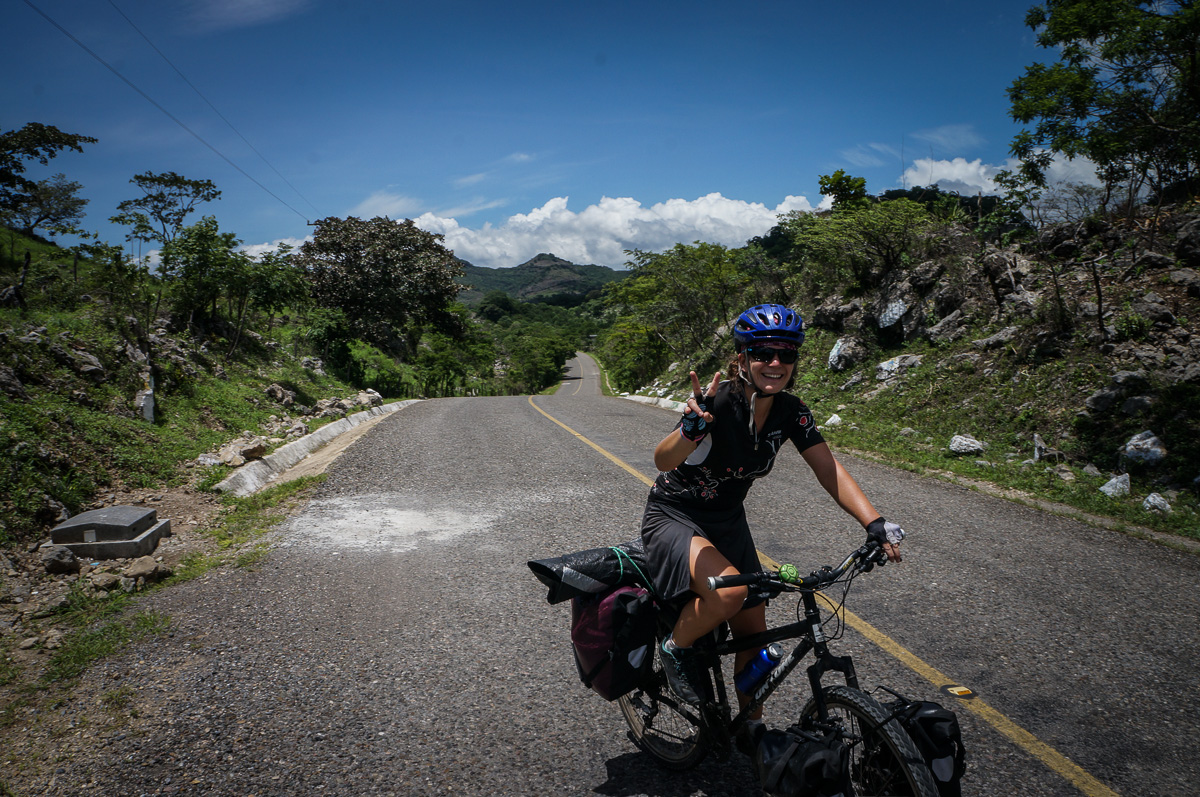
We left early the next morning and headed straight for the highway. Arrrgh! It was the most boring stretch of straight, flat road we had encountered in Mexico. After riding 30 miles with a head wind, and with the knowledge the terrain wouldn’t be changing for another three days, we decided enough was enough. We needed elevation, we needed elation, we needed a bus!
Going against our previous inclination to not use any other road transport, we escaped the heat of Oaxaca and crossed the border into Chiapas, arriving in the state capital of Tuxtla Gutiérrez nearly 2,000 feet above sea level. Contrary to reason, the steep climb up to San Cristobal de Las Casas was an intense relief. What bliss it was to feel coolness in the air and rain that actually made you shiver.
After going into the mountains, we stayed in them. We ducked and dived our way through Chiapas, the highlands of Guatemala and all the way into Honduras.
Nicaragua sounded interesting — and I was hoping my now-strong cycling legs would get us to the Caribbean coast. It’d been a while since I had taken a dip in the ocean.
By Jenny Ball

ABOUT THE AUTHOR
 Jenny Bell is currently cycling through Latin America with her partner Lars. She is finding her feet on the pedals, becoming a stronger rider with every climb. Lars carries the majority of the weight, while Jenny carries her little guitar to write and share music along the way. Follow their adventure at TourInTune.com.
Jenny Bell is currently cycling through Latin America with her partner Lars. She is finding her feet on the pedals, becoming a stronger rider with every climb. Lars carries the majority of the weight, while Jenny carries her little guitar to write and share music along the way. Follow their adventure at TourInTune.com.
The post Burning Calories And Rubber In The Heat Of Oaxaca appeared first on The Expeditioner Travel Site.
]]>The post Here’s What You Can Expect During A Food Tour Of Veracruz appeared first on The Expeditioner Travel Site.
]]>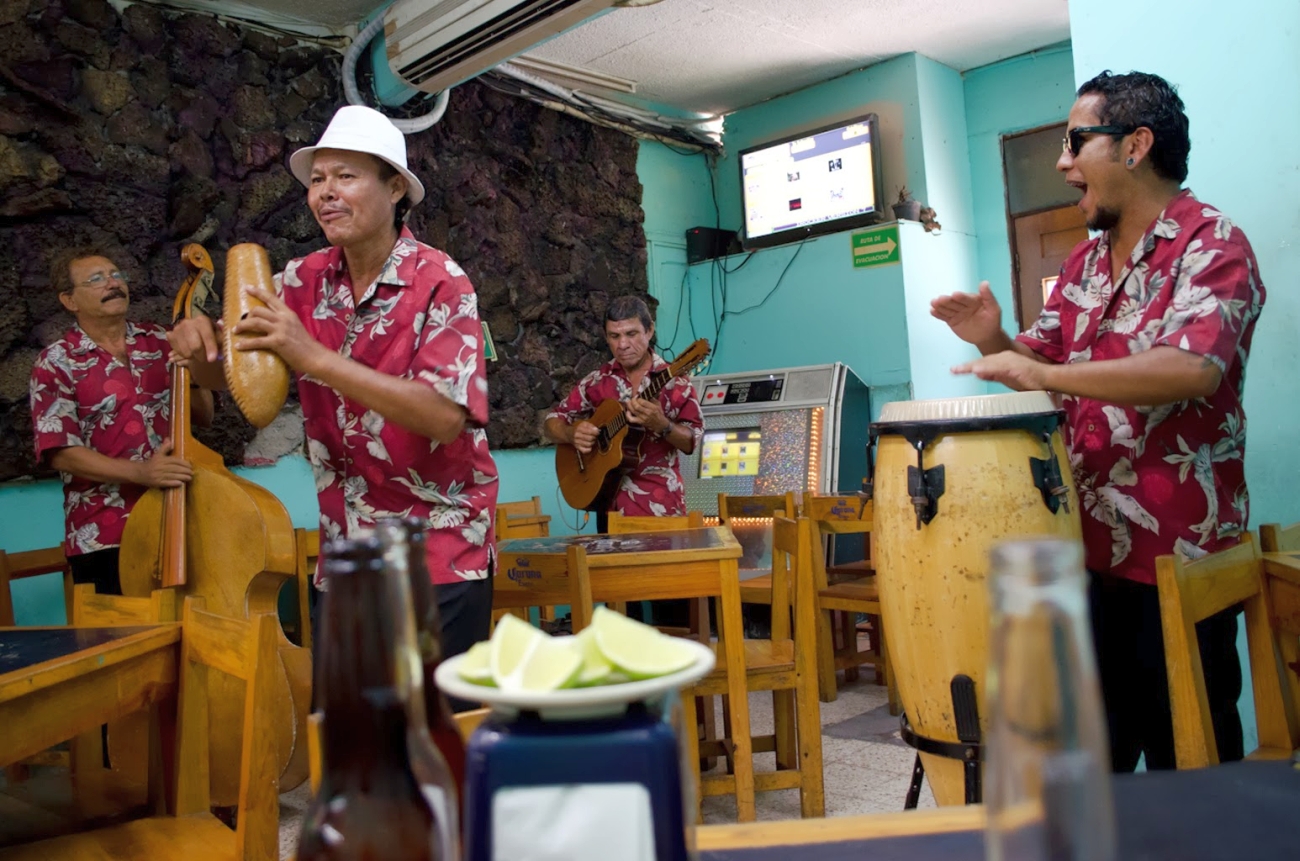
The air outside is thick, but the smoke in Santana’s bar is thicker. Even if I were a non-smoker it would be worth it just to sit in the bar’s tiny, air-conditioned seating area and watch the old men slowly drink themselves into an affectionate stupor at three in the afternoon.
This is the first stop on my locals-only, rambling tour of Veracruz, Mexico, and we’re starting with beer. This crescent-shaped state straddles the eastern portion of Mexico along the Gulf of Mexico and is famous for its history of pirates, Carnaval and the uniquely Son Jarocho style of music with its indigenous, Spanish and African musical influences — all indicative of its unique location.
Santana’s has an upside down emergency exit route sign placed gingerly between cracks in the wall. I imagine if there were a real emergency that no one would hurry to the door — no one here seems to be in a hurry to do anything. An old jukebox in the corner sits silent and a list on the wall advertises a bottle of tequila for 500 pesos (about $40). Thank God the beers are only 16 pesos.
My photographer friend, Joyce García, is a Santana’s regular. She was born in the port and when she returns to visit family she makes the bar her own personal office because of its free internet and cheap beers. “This place gets crazy,” she says as an entire salsa band walks through the door and starts to play. “Just wait a few hours.”
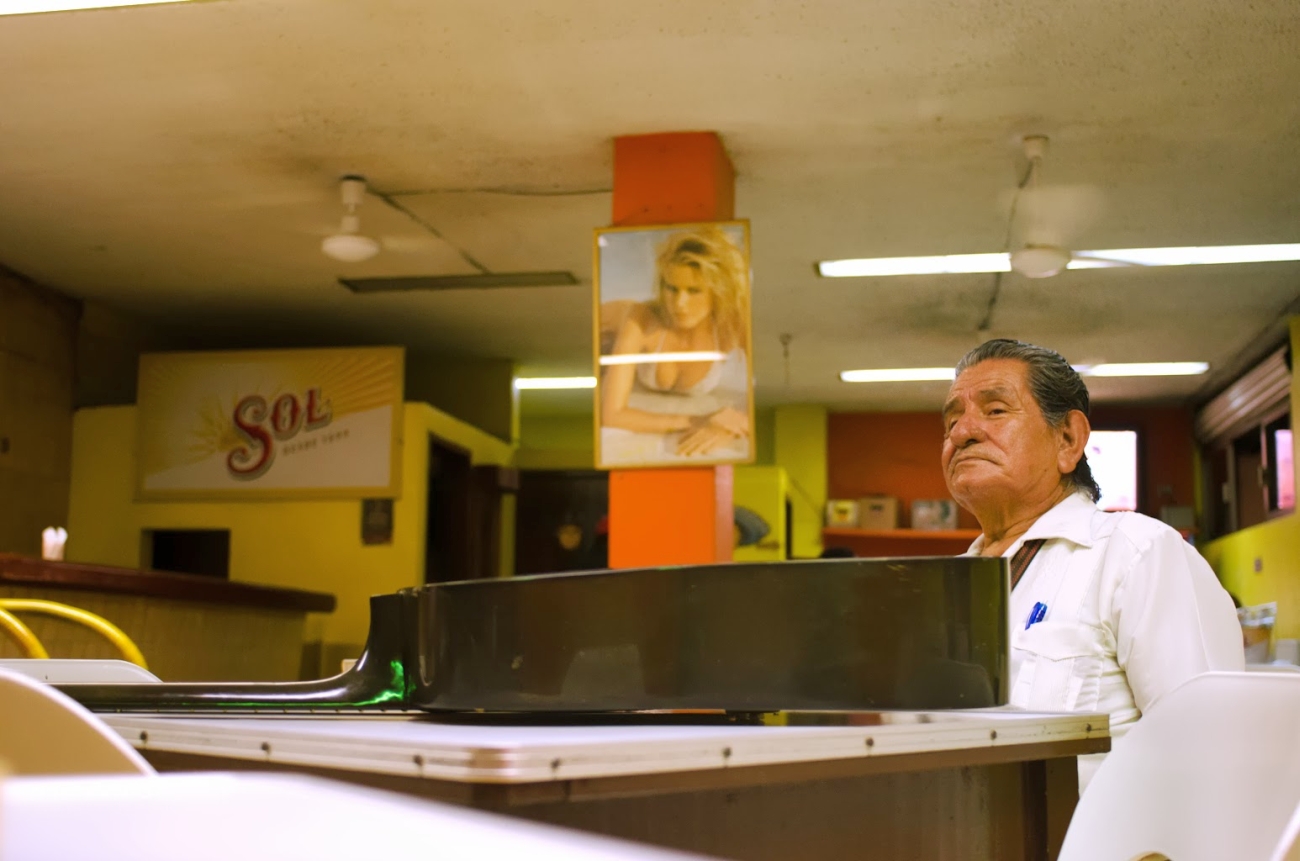
After a couple of songs and a couple more beers we leave Santana’s aquamarine walls and head down Zaragoza street to Bar Titos. Posters of half-naked women on the walls give the bar its racy element but the atmosphere is otherwise tame, with a few couples swinging to norteña music and kids wandering in and out, looking to sell candy or watch the soccer game for a few minutes. No air-conditioning here, just slow, lazy fans pushing around the salty Veracruz air.
When we get to Noche Buena bar on Arista street, I immediately fall in love with its swinging wooden doors. Every old cantina should have a wild west feel to it. Tonight, a Wednesday without a live band, the mood is relaxed and customers sit in clusters, sipping tequilas and sucking on limes sprinkled with salt. On the T.V. behind the bar, 1950’s Mexican movies play and a cat named Alfonsa rubs up against me begging for attention.
We take a break from drinking to sample the fare at Joyce’s favorite tacos de guisado stand, Los Gueros, in front of Sanborns restaurant off the main plaza. She orders a sweet tamale de elote and I eat a pork taco in spicy green tomatillo sauce and one of egg mixed with mild chile pasilla. We share an horchata — the classic rice milk drink with hints of cinnamon.
We set out from the stand on a night ramble through the historic center’s plazas. I am remembering one that I stumbled upon on my last visit here when I was a mere tourist without my local tour guide. There was a Cuban son band playing that night, and old and young couples were swaying to the music on the street. Men double my age and half my height even asked me to dance.
I find out it’s called la Plaza de la Campana for the large bell that looms over the plaza’s cement stage. You can find music there regularly. This night a band plays boleros — Mexican love songs — to a crowd seated around tables. The plaza is ringed by seafood restaurants and tiny torta shops and spectators appear to be settling in to watch until dawn.
La plaza de la Lagunilla is also lovely, with a square of park benches filled with kissing, whispering lovers and a statue of Benny Moré, the famous Cuban composer who was adopted by the Veracruz people as a native son.
La Pachanga is the last stop on the night’s pub crawl. It sits across from Veracruz’s famous portales and is the city’s late-night locals hangout. On the weekend, cumbia and salsa bands entertain the slightly lit crowds of dancers, revelers, lovers and those looking for love. After a few tequilas everyone is up and dancing, even though tonight it’s only music over the speakers and the morning is slowly washing in like the Veracruz tide.
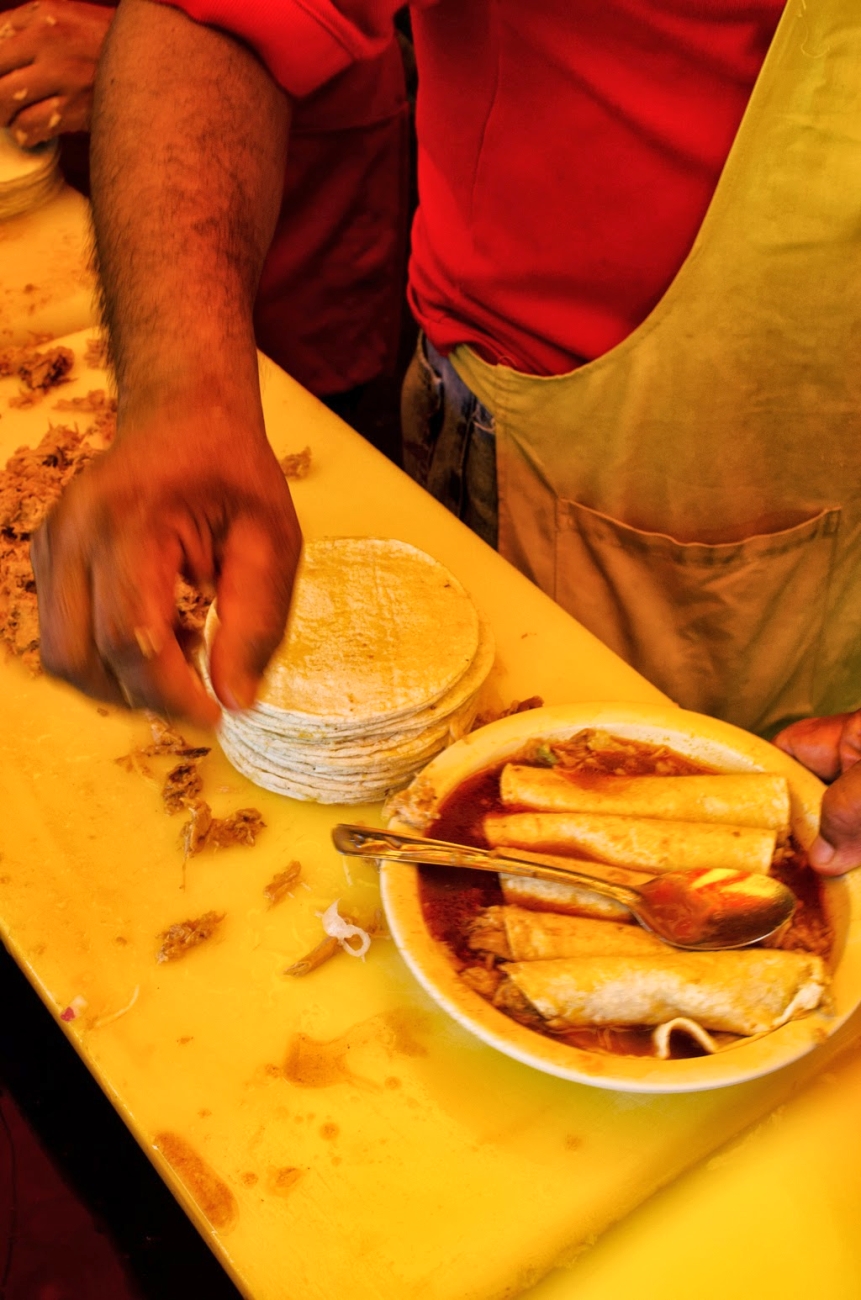
Breakfast for Veracruzanos means picadas (flat thick tortillas with a smear of beans, salsa and cheese), gordas (puffed dough that resembles tiny elephant ears made either savory or sweet) and tacos de cochinita pibil from David’s taco stand on Gómez Farías street. David’s cochinita is not like cochinita in Mexico City, where the pork is swimming in a spicy garlic and achiote sauce. This version is a mild and fragrant cochinita broth ladled on top of tightly rolled pulled-pork tacos. The stand is only open from 10 to 4 everyday. Thank God or I would probably have eaten every meal there during my visit.
Seafood is ubiquitous in Veracruz. The city’s coastal location has not only made it an important shipping port, but also a vital source of the mariscos that jarochos — Veracruz locals — are crazy about. We’re too late for the fish market that is 10 minutes outside of town. Its stalls start to shutter their doors by 3 p.m. most days and the real action there is in the morning. But we do find El Torbellino, a local seafood restaurant without all the cheesy nautical decorations and annoying waiters hassling you at the door.
We eat a plate of snail ceviche — thick, tender snail meat “cooked” by lime juice and mixed with a sprinkling of fresh tomatoes and cilantro — and sample a shrimp cocktail that is less sweet than most I have had in Mexico. Both taste amazing, especially with a cold beer, although we agree that the texture of the snail takes some getting used to.
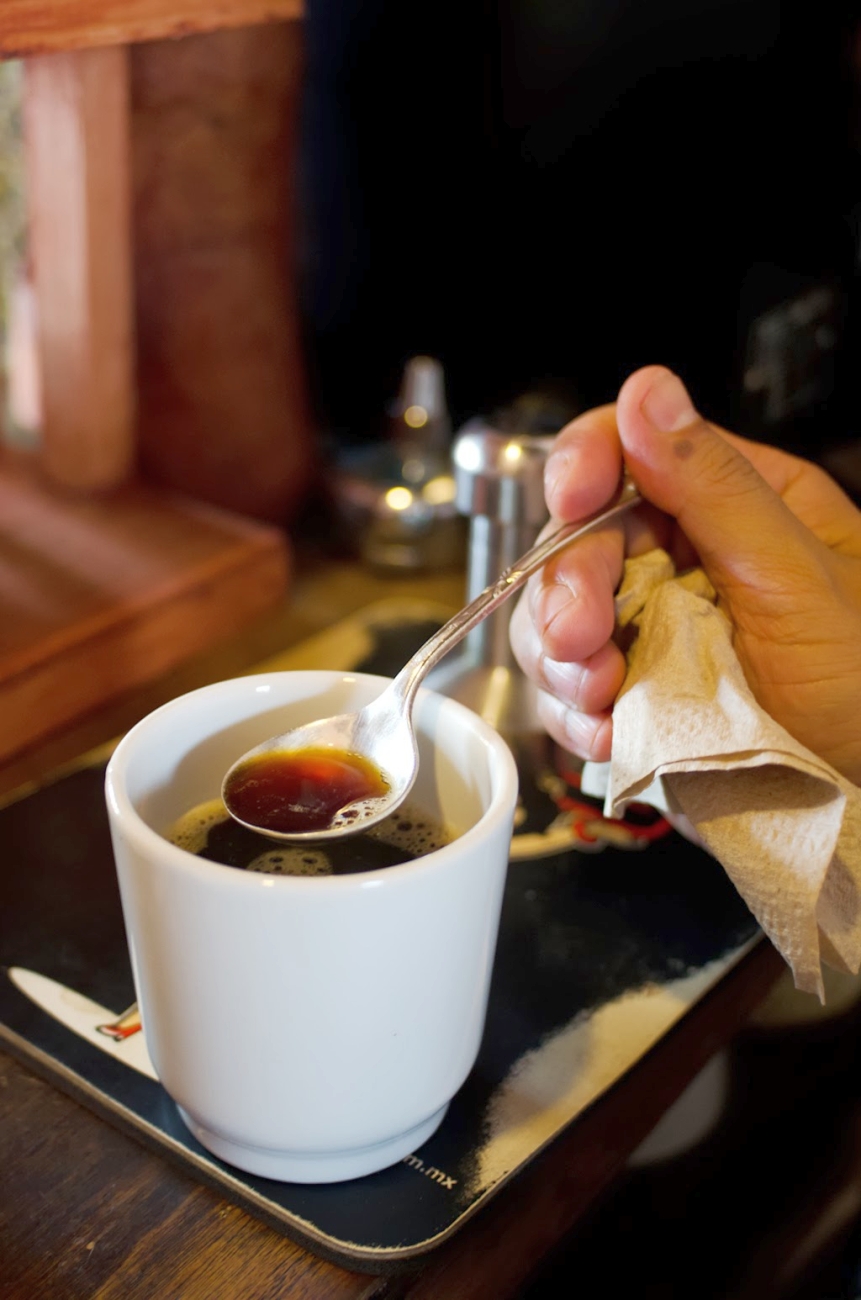
The following day we wander away from the city’s heat and take the bus to Coatepec for a final culinary escapade. Joyce assures me that this mountain town has the best coffee in Mexico and after visiting I tend to agree. Avelino’s cafe, downtown Coatepec in front of the San Jerónimo church, is a shrine to the roasted bean, and owner Avelino Hernández sits with us for over an hour talking about his upcoming book, Las Frutas Encendidas, and coffee’s spiritual qualities.
We also visit the Resobado bakery, which looks like an old woodworking shop and smells like heaven. Along its spartan walls are wood-fired pastries and breads, and the place permeates with the smell of yeast and campfire. We buy cookies with piñocillo (a type of Mexican brown sugar), wheat yeast rolls and conchas (sweet bread).
I want to be able to say that Coatepec is truly the best place for visiting coffee-lovers and so as a security measure we stop at Cafetal Apan for a final cup of coffee. I’m not let down. In fact more than down, the caffeine gives me a buzz I won’t lose for a couple of hours until we’re finally sitting in Las Tradiciones restaurant in the Costa Verde neighborhood downtown Veracruz chowing down on steaming hot ground beef and potato empanadas and drinking cold beers in the pouring rain.
I’m in a bit of a panic at this point that I haven’t yet tried the Naval hotdogs or been to Emily’s Antojitos on Zapata street that I heard is incredible. I also want to make my own seafood feast in Joyce’s kitchen from what I can find at the fish market. But time is running out. I decide incredible empanadas are not a bad final feast.
By Lydia Carey
[Photos by Joyce García]

Locations
Santana’s Bar
Zaragoza
(In front of Los Portales)
Veracruz
Bar Titos
Zaragoza 208
Veracruz
Rest-Bar Noche Buena
Mariano Arista 803
Veracruz
(229) 932-5122
La Pachanga
Mario Molina 100
Veracruz
Tacos de David
Corner of Gómez Farías and Esteban Morales
(In front of Notiver)
Veracruz
Mercado la plaza del mar (Veracruz Fish Market)
Corner of J.M. García and Fidel Velásque
Veracruz
El Torbellino
Corner of Esteban Morales and Zaragoza
Veracruz
Avelino’s Cafe
Mansión de Los Azulejos
Aldama 4
Coatepec
(228) 816-3401
Resobado Bakery
Constitución 3
(228) 817-8888
Coatepec
Cafetal Apan
Constitución 48
Coatepec
Las Tradiciones Restaurante
Mar Mediterráneo 338
Veracruz
ABOUT THE AUTHOR
 Lydia Carey is a full-time writer and translator living in Mexico City who loves to eat. Her work has been published in Mexico’s English-language newspaper The News and The New World Review. She can be contacted at carey.lydia8[at]gmail.com.
Lydia Carey is a full-time writer and translator living in Mexico City who loves to eat. Her work has been published in Mexico’s English-language newspaper The News and The New World Review. She can be contacted at carey.lydia8[at]gmail.com.
The post Here’s What You Can Expect During A Food Tour Of Veracruz appeared first on The Expeditioner Travel Site.
]]>The post How A Radish Festival In Oaxaca Made Me Feel Like A Mexican appeared first on The Expeditioner Travel Site.
]]>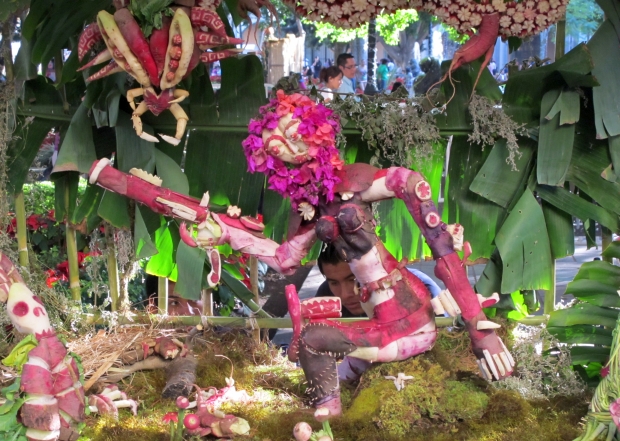
“Oye chica! Tenga aca. Te invitamos!” Someone was calling to me as I walked by a makeshift tent on the side of the street in Oaxaca’s old center. Curious, I joined the speaker, a young Mexican man, as well as a few others, underneath their tent.
They had set up a large folding table which, upon closer examination, I found covered with radishes of all shapes and sizes. “Tomas,” said the man, whom I later learned was named Luciano, as he handed me a razor blade and indicated that I was to choose a radish from the heaping pile. As I carefully selected the perfect radish, the rest of the table contentedly shaved, carved, dismantled and reassembled their own radishes into a variety of different shapes and figures.
If I had come upon this scene a few days before, the request might have seemed a bit odd. However, the previous day on my tour of the sights surrounding Oaxaca, my guide had informed me of my great luck in arriving in Oaxaca just in time for their annual Noche De Los Rábanos (Night of the Radishes) festival. I had never heard of this festival before, but I was one of those kids that made words in my alphabet soup and drew smiles on my pancakes with whipped cream, so naturally I was intrigued by the idea of creating art out of food. I ventured into the Zócalo on December 23 (the date the festival has been celebrated since its inception in 1897) to see exactly what made this festival so famous.
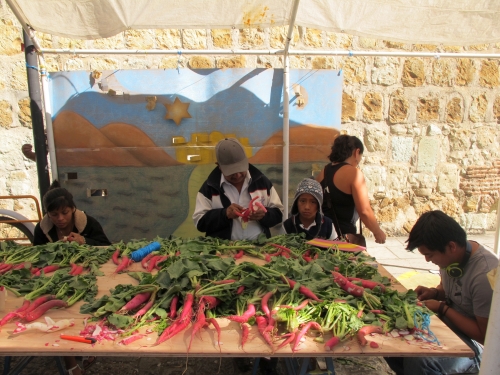
Even in the early afternoon, the main plaza was so full of onlookers that it was difficult to move. The smell of tamales, chile, popcorn and cotton candy lingered in the air and reminded me of the many times I visited the New Mexico State Fair with my family. Vendors called elote and nieve in singsong voices, and children danced to music emanating from the many different portable speaker systems as happy families shared homemade picnics.
While I strategized how to get a better view of the exhibition stalls, an older gentleman motioned for me to take a seat next to his family. “Quieres?” he asked, and offered me a chicken taco.
“No gracias,” I replied.
“Feliz Navidad,” he said with a toothless grin. I then asked him why so many people come to Oaxaca every year specifically for this festival.
“It is important to celebrate our history and our art,” he explained. “It is a time for us to come together and be thankful.” Despite me asking, I never did not get a “historical” explanation about the origins of Noche De Los Rábanos from any person that I asked about the festival; it was obvious that the most important thing to these locals was spending time together and sharing in the appreciation of Mexican creativity. And the joy was tangible.
Noche De Los Rábanos was first celebrated in 1897 in Oaxaca’s “zócalo” (main plaza). Originally, radish farmers, with an overabundance of radishes from the harvest, decided to create art out of the excess crop in order to generate more radish sales.
However, this activity quickly grew in popularity. Since then, annually on the morning of December 23, artisans from all over Oaxaca converge on the zócalo and spend all day constructing intricate scenes made of these large red radishes. These radishes, grown especially for this event, can weigh up to 3 kilograms and grow to lengths up to 50 centimeters. They are left in the ground for months after the normal harvests so that they are able to attain their giant size and strange shapes. The artist whose creation is named best in show gets their picture in the local paper.
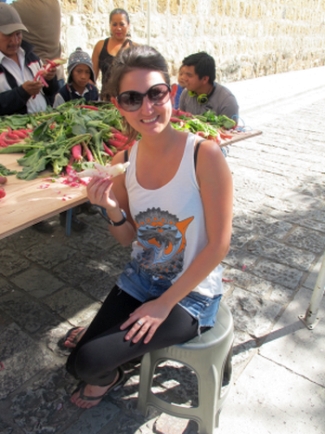
I struggled through the crowd to try and get a better look at the different stands, and as I proceeded I felt hands pushing me forward. My fellow neighbors were moving out of the way to make sure I was able to see. “Veas!” they said, pointing out sights they wanted me to see. Suddenly, I was transformed from a mere visitor in a foreign country into a nominal member of one enormous family.
As I moved from one stand to the next, I found myself casually placing my hand on my neighbor’s shoulder to steady my tip-toed stance. We all smiled in response, and I realized how many times in New York I had stood in close quarters with my fellow New Yorkers, actively trying to avoid physical contact. In Mexico, personal space has another purpose: its breach, rather than an offense, signifies friendship, comradery and acceptance.
I moved along with the wave of people, and each stand was more impressive than the last — an amazing representation of the creativity, beauty and history of Mexico. The artists, I learned, are mostly radish farmers turned professional craftsmen and aficionados. The scenes cover an array of topics from the nativity, to models of saints and famous figures, to fiestas, to the flora and fauna of Mexico. While the main artistic features are made of radishes, these scenes include other materials such as dried flowers and corn husks.
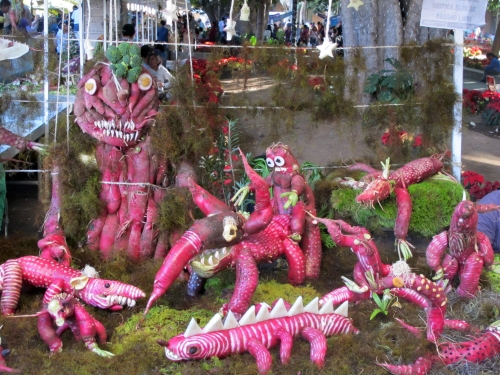
“Ah, un delfin!”, Luciano said to me approvingly, looking over my shoulder as I attached the fins to my radish-turned dolphin. As we spent the next hour admiring each others’ creations, my fellow artists asked me about my experiences in Mexico, how I was enjoying Oaxaca and what it was like to live in New York City.
We conversed like old friends, Luciano poking fun at my dolphin’s lopsided tail, another comparing his hand-like creation to that of a witch. It made no difference that I was a single girl traveling alone, that my Spanish was not perfect, nor that prior to that day I had no idea that Noche De Los Rábanos even existed.
After I visited all of the different Rábanos scenes, I wandered back towards my apartment through Oaxaca’s main thoroughfare. People smiled and exchanged Feliz Navidads, and gasped with excitement when fireworks streaked the sky with radiant blues, pinks and oranges.
As I left the main street behind, I passed by the now deserted tent where we had earlier created our own radish art. Someone has arranged all of our creations into one beautifully chaotic diorama.
Even though our scene had no specific theme (we had created everything from animals to cars to abstract figures), to me it was the most powerful scene of all because it represented the beauty that is created through acceptance and friendship. I smiled, thinking to myself how Noche De Los Rábanos is much more than just an art festival. It is a true expression of the Mexican persona: open, accepting, generous and full of joy.
By Chelsea Perino

About the Author
 Chelsea Perino is an avid traveler and has visited over 60 countries, mostly as a solo female. Chelsea recently graduated with a Master’s Degree in Public and Organizational Relations and is now a freelance Public Relations and Marketing consultant and writer in New York City. She is the Co-Founder of her own online lifestyle magazine DIY-NYC.com.
Chelsea Perino is an avid traveler and has visited over 60 countries, mostly as a solo female. Chelsea recently graduated with a Master’s Degree in Public and Organizational Relations and is now a freelance Public Relations and Marketing consultant and writer in New York City. She is the Co-Founder of her own online lifestyle magazine DIY-NYC.com.
The post How A Radish Festival In Oaxaca Made Me Feel Like A Mexican appeared first on The Expeditioner Travel Site.
]]>The post Explore The Colors Of Puerto Vallarta [Travel Video] appeared first on The Expeditioner Travel Site.
]]>Ever heard of the Blackmagic Cinema Camera? Me either, until I watched the above video from Andrew Julian who did a little test run of his new camera while on a trip to Mismaloya, a small village located just south of Puerto Vallarta. (Fun fact: parts of Predator were filmed nearby.)
Besides setting you back a cool $3,000, the Blackmagic prides itself on providing stunning colors due to its 2.5K image sensor and 13 stops of dynamic range. I wish I knew what that meant exactly, but I don’t. However, the proof is in the images, and these images look nothing less that spectacular.
[Trip to Mexico by Andrew Julian/Vimeo]
The post Explore The Colors Of Puerto Vallarta [Travel Video] appeared first on The Expeditioner Travel Site.
]]>The post [Travel Video] Cooking Demo At Sasi Thai Restaurant, Cancun, Mexico (Green Tea Smoked Salmon) appeared first on The Expeditioner Travel Site.
]]>In this video chef William Lafontaine, executive chef at Sasi Thai, shows me how to cook his specialty dish, Green Tea Smoked Salmon. Sasi Thai is located at the CasaMagna Marriott, Cancun, Mexico, a hotel Marriott graciously put me up in so that I could make this video.
In an effort to keep up with my theme of video titles, I was thinking of calling this video: “The Expeditioner’s Guide to Smoked Salmon.” But that just doesn’t make any sense. It also would likely make people not want to click on the video due to the title alone.
Other titles I played around with were as follows:
“When Matt Met Salmon”
“Matt Versus the Salmon”
“Salmongeddon”
“The Chef, the Blogger, and the Salmon”
“The Salmon Strikes Back”
“The Passion of the French-Canadian Chef”
I went with something a little more prosaic instead.
[Related video: Travel Guide to Cancun/Yucatan (HD)]
The post [Travel Video] Cooking Demo At Sasi Thai Restaurant, Cancun, Mexico (Green Tea Smoked Salmon) appeared first on The Expeditioner Travel Site.
]]>The post Travel Guide to Cancun/Yucatan Peninsula (HD) appeared first on The Expeditioner Travel Site.
]]>The post Travel Guide to Cancun/Yucatan Peninsula (HD) appeared first on The Expeditioner Travel Site.
]]>The post Top 6 Hipster Neighborhoods Around The World appeared first on The Expeditioner Travel Site.
]]>1) Shoreditch in London, U.K.
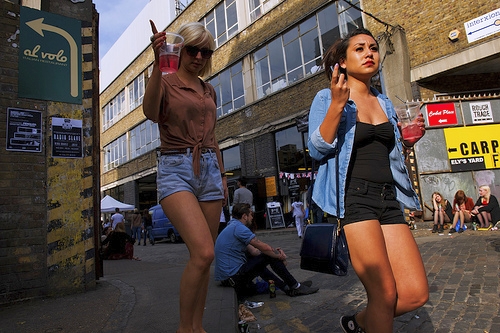
This East London neighborhood is by far the most painfully hip in all of Londontown (painful because of the high prices and really, really tight jeans). The bulk of the action can be found around Old Street and Brick Lane, where lanky girls and boys alternate chain smoking with pouting.
The area is peppered with intricate graffiti (or “street art” if we’re going to be pretentious), which makes it perfect for a daytime walk. But even in the daytime, make sure you don’t risk being caught without your Ray-Bans and attitude. Like any decent hotspot, the real fun happens at night at the slew of random bars, themed speakeasies and warehouse parties. The latest development in the area is Boxpark: a temporary (at least for the next five years) pop-up mall made out of shipping containers, featuring a mix of international and independent fashion designers as well as galleries and cafés.
2) Amsterdam-Noord in Amsterdam, Netherlands
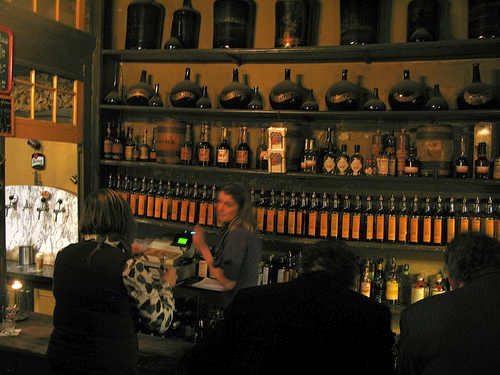
With the amount of bikes in Amsterdam, it’s no surprise that this city is hipster friendly, but the crux of action is in the north. “I feel like I’ve been exiled to hipster island,” said the indelible Anthony Bourdain upon visiting the industrial, but oh-so-cool neighborhood of Amsterdam-Noord. The area is peppered with former warehouses and shipyards that are now outfitted as tricked-out offices, art studios and even a skate park. Even Red Bull and MTV got in on the action and moved there.
3) Shimokitazawa in Tokyo, Japan
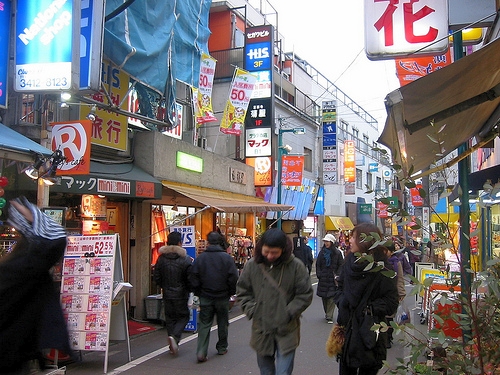
In western Tokyo you’ll find a hub of cool indie and antique shops, galleries, resto-bars and live music venues. Shimokitazawa (pronounced SHEE-mo-kee-tah-zah-wah) is actually pretty tame compared to the neon glare of the rest of Tokyo, but it’s still a nucleus for young Toykoite culture vultures. Most streets are pedestrian-only; the small storefronts, which are mainly converted residences, lend to lazy exploring and browsing in the wealth of chill record shops and second-hand clothing stores.
4) La Roma in Mexico City, Mexico
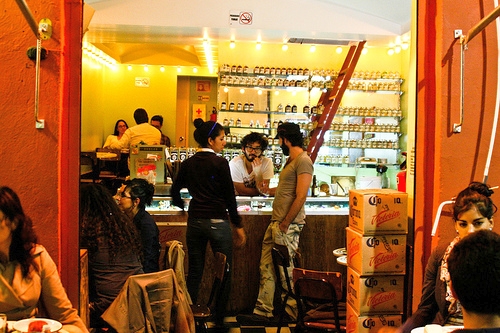
A local described La Roma (also called Colonia Roma) and neighboring La Condesa as the East Village and West Village of Mexico City, respectively. Along Alvaro Obregon, vendors assemble to sell books, antiques and collectibles, while Calle Orizaba and Calle Colima is know as an art Mecca full of galleries (such as Galería OMR). Like the other hipster locales, La Roma mixes grungy roots with a fresh high-end influx. La Roma isn’t without a grime factor. The area — though upscale— has problems with prostitutes and squatters, but hipsters don’t scare easy.
5) Kreuzberg in Berlin, Germany
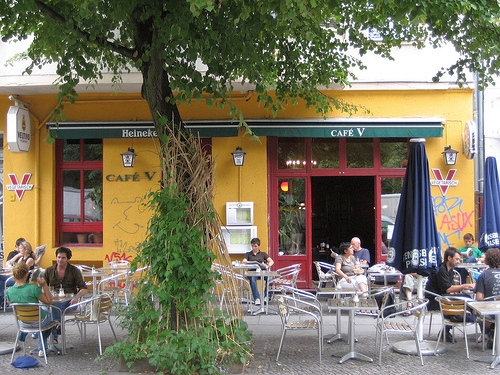
First off, it almost goes without saying that Berlin is a modern-day hodgepodge of hipster culture. In fact, it may be the hipster-est city in all of Europe. Hipsters of every sub-genre congregate at Görlitzer Park for impromptu jam sessions, DJ sets and brews (though they don’t have PBR) at the park bar, Das Edelweiss. Other activities are centered upon Oranien Strasse and Skalitzer Strasse where the nightlife magic happens.
6) Fitzroy in Melbourne, Australia
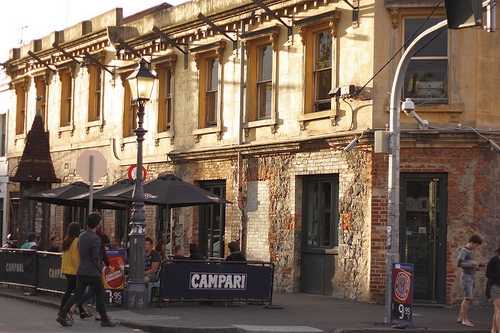
Fitzroy’s main drag is Brunswick Street, full of cheap, vegan eats and funky, retro pubs. The area is packed with the usual mix of the beautiful and the damned: broke students, fashionistas, boho artists and of course 20-something hipsters. The neighborhood is bursting with creativity as depicted by the slew of always-curious street art and graffiti, which can even be observed via an official tour. Take it all in and enjoy. If you’re not feeling Zooey Deschanel enough, the neighborhood is also home to Rose Street Artists Market hawking handmade goodies like clothes, jewelry and homewares.
By Nicole Trilivas
[Al Volo by Chris JL/Flickr; Netherlands by zemistor/Flickr; Shimokitazawa by Michael Vito/Flickr; ; La Botica Mezcalería by Alejandro De La Cruz/Flickr; Cafe V, Vegetarian Cafe by hack man/Flickr; Untitled by Louisa Billeter/Flickr]

About the Author
 Nicole Trilivas is the author of the novel, Pretty Girls Make Graves: A pretty girl’s ugly story told in borrowed voices. She is currently scheming away on her next novel, and being terribly bohemian by living off of canned soup and indulging in delusions of grandeur. Snoop around NicoleTrilivas.com for more glittery gems of information.
Nicole Trilivas is the author of the novel, Pretty Girls Make Graves: A pretty girl’s ugly story told in borrowed voices. She is currently scheming away on her next novel, and being terribly bohemian by living off of canned soup and indulging in delusions of grandeur. Snoop around NicoleTrilivas.com for more glittery gems of information.
The post Top 6 Hipster Neighborhoods Around The World appeared first on The Expeditioner Travel Site.
]]>The post Skip The Beach, Visit The Real Mexico appeared first on The Expeditioner Travel Site.
]]>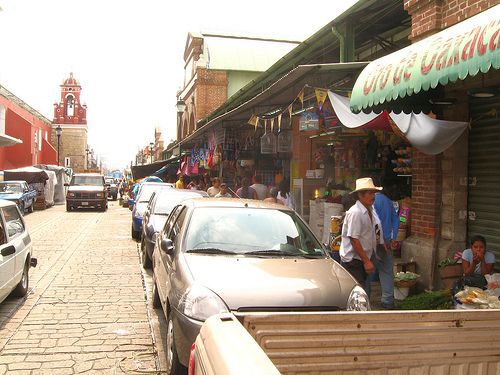
I know that for most people, Mexico this time of year means beaches, beer funnels, lounge chairs, diving excursions, 600-thread count sheets, sunny weather, and nights slept on the floor of dingy jail cells while being protected by someone named “Big Hector” who for some reason has taken an interest in your well-being (okay, that last one may only apply to me).
But as anyone who has visited beyond the confines of gringo territory knows, outside there is a vast country rich in cultural heritage, unique regions and local food offerings that will put your favorite corner Tex-Mex restaurant to shame. To help you discover some options for areas to visit in Mexico that have nothing to do with Señor Frog’s, the Toronto Star takes a look at a couple of areas you can visit and which are easily accessible from that “other Mexico.”
Merida
A visit to Merida, Yucatan — a city of a million people and only a half-day drive from Cancun — offers open-air theater performances at the University of Yucatan; La Casa de las Artesania, home to a wide variety of indigenous art; and the ruins of Chichen Itza an hour-and-a-half southeast where you can explore Mayan-era temples and pyramids. There are also a number of sleepy beach towns nearby that are away from all the tourists and where you can work in some R&R from all that culture.
Oaxaca
The southern state of Oaxaca — long a mecca for food lovers — is home to Benito Juarez market, which offers a wide variety of local fare, as well as close access to La Soledad chocolate shop where you can sample what chocolate mole tastes like (try getting that in Cozumel). There are also plenty of restaurants, including El Asador Vasco and La Casa de la Abuela, both great options for trying out mole, Oaxaca’s unofficial signature sauce.
It may not be the Spring Break you’re used to, but it’s guaranteed to leave you with much better memories (and likely a cleaner arrest record).
[Calles de Oaxaca by Hector Garcia/Flickr]
The post Skip The Beach, Visit The Real Mexico appeared first on The Expeditioner Travel Site.
]]>The post How Widespread Is Violence In Mexico Really? appeared first on The Expeditioner Travel Site.
]]>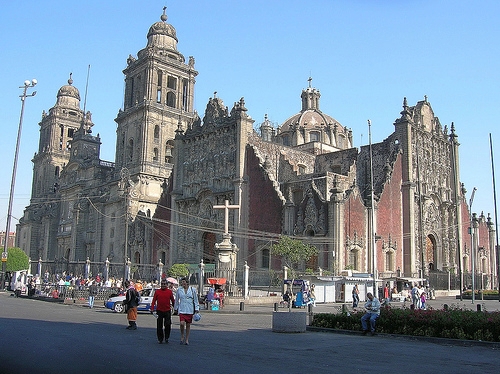
I’m not one for taking to heart the warnings of danger when traveling. From the overblown threat of pickpocketers in Barcelona to the unfounded warnings of imminent kidnapping the second one steps off the plane in Colombia, I often wonder whether these rumors of danger are often nothing more than a classic fear of the unknown. (I also take heart — if that’s how you want to put it — that the violent crime rate in my own neighborhood here in New York probably far exceeds most anywhere I choose to travel on the globe.)
That being said, danger does exist in certain countries — Mexico for example, where a very real organized crime problem is making certain northern states make Chicago in the ’20s look tame.
But why not take a look at the hard facts, as The Washington Post recently did, and examine how widespread the crime really is in Mexico?
Rodolfo Lopez-Negrete, chief operating officer of the Mexico Tourism Board, cites to the fact that crime is relatively limited to a small portion of the country (despite what you see on the news):
Of 2,500 municipalities (what we call counties), only 80, or fewer than 5 percent, have been affected by the drug war, which accounts for only 3 percent of all crime. Mexican cities are also safer than some urban centers north of the border: Mexico City, for example, has 8.3 homicides a year per 100,000 people. That’s fewer than Miami (14.1) and Chicago (16.1). On a global scale, Mexico is safer than many of its neighbors. In 2008, the United Nations Office on Drugs and Crime reported Mexico’s homicide rate as 11.6 per 100,000, significantly lower than Honduras (60.9), Jamaica (59.5) or El Salvador (51.8).
Something to keep in mind next time you’re somewhere like Miami. Come to think of it, last time I was in Miami I ended up at a club where Paris Hilton happened to be, which kind of made me wish I was in a gang-controlled Mexican state instead.
[El Zòcalo by borgodioria/Flickr]
The post How Widespread Is Violence In Mexico Really? appeared first on The Expeditioner Travel Site.
]]>The post 5 Best Places To Scuba Dive In The World That Have Nothing To Do With Fish appeared first on The Expeditioner Travel Site.
]]>
It’s hard to imagine that someone would get bored limiting their diving experiences to coral reefs, but for those looking for a little variety in their underwater adventures, why not try exploring some of the world’s best places to dive that have absolutely nothing to do with animals that could populate a Disney movie?
For example, in the Caribbean waters off of Cancun, Mexico, is the Underwater Museum of Modern Art, a creation of artist Jason deCaires Taylor who planted over 400 life-sized coral-friendly sculptures on the seabed, offering divers a once-in-a-lifetime museum-going experience.
Or if X-Files-like encounters are more your thing, near the Yaeyama Islands off the westernmost point of Japan is an underwater pyramid whose origin has yet to be explained. Natural phenomena, aliens, ancient Egyptians way off course — no one knows for sure, but scientists are at least sure the structure dates back some 5,000 – 8,000 years.
For the rest of the list, check out the full article at CNN.com.
[Image by Jason deCaires Taylor]
The post 5 Best Places To Scuba Dive In The World That Have Nothing To Do With Fish appeared first on The Expeditioner Travel Site.
]]>The post Mexican Road Trip: Should You Do it? appeared first on The Expeditioner Travel Site.
]]>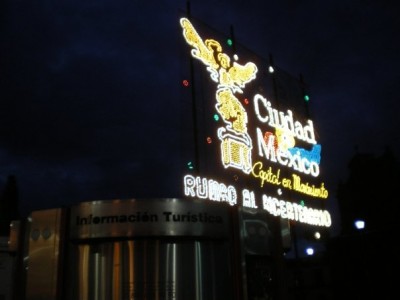
Braving an awesome experience comes with the weight of cost and benefit. To experience a culture — the people, the language, the street food — as authentically as possible is always the goal. Some no longer wish for simply Tex-Mex. Some want the real thing. At the end of the day, whether you actually take that epic road trip through Mexico with likely depend on how you plan to deal with the reality that violence has erupted in that beautiful country.
That’s why this article at Bootsnall is a nice rough guideline to trekking South of the Border. It provides a list of precautionary guidelines:
Drive the main roads: As the article explains, the main roads are usually both better maintained and provide a little more security. Apparently, the lower down the road food chain, the more interesting the towns, but the less security.
Travel during daylight hours: Something that should be considered in general, but more specifically for the lower food chain roads.
Expect delays: I think this rule applies to “Anywhere, World.”
Stay in organized places: Organized places can also mean your own family. Also, when staying in cities and towns, it is important to know what neighborhood your hotel or hostel is in. If it is in a rougher area, just make sure that you take enough sense to catch a cab when needed instead of taking the night to walk the streets.
Pack a sense of humor: Also always applicable for “Anywhere, World.”
Once you have packed these things (including a spare toothbrush and a positive attitude), it’s important to know which direction (roughly) you wish to go. For those that like to flow with a journey, I think the most important thing to pack is one’s sensibilities.
One of my friends just recently ventured into Mexico City on her own during a seven-hour stopover. She was ordering something delicious from a fonda — kind of like a family-run cantina — when the woman invited her back to the house to eat. My friend’s common sense kicked in.
She knew that talking with the woman was no danger, but by gently saying, “No, thank you. I am sure you are very kind, but I don’t know you, I am alone and would feel uncomfortable putting myself in that situation,” was a polite way of keeping the situation in control.
The woman was not offended, instead she replied, “You are a smart girl.”
You can explore the world with a sense of wonder, new to foreign customs and languages, but not be ignorant of one’s safety. One needs to find a fulcrum of balance, between danger (over-exploration of one’s adrenaline rush) and adventure (exploration of something new). If you are really nervous, take a friend or, as the article suggests, just let others know where you are going and when.
I would like to add some suggestions, like geting in touch with your intuition (trust your gut), doing your research, being informed of current events and knowing some practical words and phrases other than “Donde esta el bano?” (like embajada — embassy).
With these and the other simple measures in the article, you can navigate your way through the streets to eat tacos al pastor — with pork and pineapple — or elotes — corn smothered in mayo, chili powder, cheese and lime. Or take in the sights like Teotihuacan and meander through the Oaxaca region. A trip to Mexico can be an amazing experience, it just helps to do some things on your end to ensure that it will be.
By Brit Weaver

About the Author

Toronto born and based, Brit is an avid leisurely cyclist, coffee drinker and under-a-tree park-ist. She often finds herself meandering foreign cities looking for street eats to nibble, trees to climb, a patch of grass to sit on, or a small bookstore to sift through. You can find her musing life on her personal blog TheBubblesAreDead.wordpress.com.
The post Mexican Road Trip: Should You Do it? appeared first on The Expeditioner Travel Site.
]]>The post Tour Divide: The Most Difficult Bike Race On Earth You’ve Never Heard Of appeared first on The Expeditioner Travel Site.
]]>
A record-setting field of racers is nearing completion. Some race for the experience and some for the physical test. Some race to see if they can truly achieve their dream, some out of curiosity, and some for the idea. Some race to win.
On June 9, 77 people will converge on Banff, Canada. They will be full of cautious optimism and nervous energy. They will take a final shower, drink a final beer, and sleep in what could be the last bed they see in the next month. The next morning, before the sun shows on the Canadian Rockies, the racers will be starting the most epic race that most people have never heard of: the Tour Divide.
The premise is simple: no outside help, no shortcuts, bicycles only, and the first person to Mexico wins.
The 2,745 miles along the spine of the continent has a tendency to punish racers in every capacity: physically, mentally, emotionally, and even mechanically. It’s just a rider, a bike, and the divide stretching out before them.
Around mile 700, the trail descends four miles from Elk Park into Butte, Montana. This is a milestone of sorts, as racers turn right onto Harrison Avenue and pull their two-wheeled steeds into the parking lot of The Outdoorsman Sport Shop. The challenges of the previous miles are obvious at this point.
 Rick Smith is the head mechanic at The Outdoorsman. Being a mechanic on a trail of this nature can be both daunting and exciting. “What I do as a mechanic working on each rider’s bike can mean the difference between a successful, uninterrupted journey or an unhappy ending.”
Rick Smith is the head mechanic at The Outdoorsman. Being a mechanic on a trail of this nature can be both daunting and exciting. “What I do as a mechanic working on each rider’s bike can mean the difference between a successful, uninterrupted journey or an unhappy ending.”
Smith credits his extensive training for his success in aiding riders. “My personal standards for excellence are high, which is why I get recurrent annual professional factory service training on new products and am a recent graduate of the USA Cycling Bill Woodul Race Mechanics Clinic held at the U.S. Olympic Training Center. I currently hold a USA Cycling Race Mechanic’s License and am a Barnett Bicycle Institute Certified Bike Mechanic. As a result of my professional training, I have learned to leave nothing overlooked, to attend to the tiniest details, and to routinely double check my work before a bike leaves my stand and heads back out on the GDBR trail.”
The Tour Divide, officially called the Great Divide Mountain Bike Race (or GDMBR), takes place on the longest off-pavement cycling route in the world. Racers must navigate through two Canadian provinces and five states. If you are lucky enough to reach Antelope Wells, New Mexico — the finish line on the U.S.-Mexico border — you will have lugged your bike and gear up the equivalent of seven Mt. Everest summit climbs (and that’s from sea level, mind you).
“Over the past few years, it has become obvious that this is a race like no other. Countless hours of racers sharing their experiences as I worked on their bikes has provided some insight into their motivation for tackling the world’s longest mountain bike race,” says Smith.
Consider the elements: a 100-degree temperature difference over the span of the course, grizzly bears, mountain lions, post-holing yourself over snow-covered passes, mud so thick you could turn a vase, rivers crossings swollen by spring runoff, and 18+ hours of never-ending pedaling and trail. Throw in an international border crossing and the skill set required of these athletes in astounding.
Smith, understandably so, stands in awe of these athletes. “The Tour Divide CDT route through Montana from Roosville to the Idaho-Wyoming border east of Lima has historically been a deal breaker for over 40% of race entrants. Deep mountain pass snows in the north, steep terrain, heavy rain storms, and miles of Bannack Bench mud, have tested the mettle of many a racer.”
Maybe it’s the daunting, masochistic challenge of a possible accomplishment that shows itself just beyond the horizon that attracts these brave souls. The 2011 start list shows not only 77 racers leaving Banff southward, but also has 14 names competing on the south-to-north race route, and nine people committed to a time-trial version of the race (racer versus the clock rather than a field of competitors). The improbable journey over North America’s most rugged terrain by human power attracts a certain type of person.
“All of their unique stories weave a tapestry of their common deep love for adventure across the top tube and the intrigue the trail holds for facing and overcoming unknown personal physical and mental challenges, all set against the backdrop of the stark isolation and reality of a grueling 2,745-mile pursuit of one’s inner truth,” says Smith.
Whether you’re an introvert, goal-oriented, or an adventurist, this brutally simple and epic race will challenge the racers in ways they have may have never known. The recent documentary, Ride the Divide, touches just as much on the mental and emotional tolls as the physical ones. The trail lies evermore at your feet and despite days upon days of never-ending pedaling, the end is just as far off. You are alone and the world is vast.
Smith agrees. “For me, their journey is the ultimate test of human physical and emotional endurance which pits each rider against the demands of terrain, weather, wildlife encounters, traffic on steep remote mountain roads, resource management for survival, course navigation, mechanical failure, physical injuries, fatigue, and social isolation.”
 Why individuals pursue a goal such as this may be an unanswerable question. “If it were me, it would be to meet almost insurmountable physical and mental challenges head-on and overcoming them through self-reliance and exceptional resource management. The ultimate outcome: to answer all those nagging questions from the committee in your head.” Smith also plans on tackling these reasons as racers arrive this summer. “I’m going to ask every racer this year this question to gain some insight.”
Why individuals pursue a goal such as this may be an unanswerable question. “If it were me, it would be to meet almost insurmountable physical and mental challenges head-on and overcoming them through self-reliance and exceptional resource management. The ultimate outcome: to answer all those nagging questions from the committee in your head.” Smith also plans on tackling these reasons as racers arrive this summer. “I’m going to ask every racer this year this question to gain some insight.”
***
A racer’s bike rests in the stand at the Outdoorsman Sports Shop. The afternoon is turning to evening along the Continental Divide. The drivetrain is shot, brake pads almost nonexistent, and mud coats nearly every inch of what appears to be a bicycle. It’s a miracle both rider and bike got to this point. The first wipe across the top tube reveals a sticker.
“Pedal damn it.”
The motivation for a quest like the GDMBR is as numerous and varied as the thousands of miles it covers. The lure of an epic conquest is, as well.
“I wish I could ride along to experience the adventure,” Smith concludes, wistfully.
By Jon Wick

About the Author
 Jon lives in Butte, Montana, spending most of his time on skis or bikes; sometimes both. He began travel writing while teaching in Korea and is currently pursuing his Master’s Degree in Technical Communication at Montana Tech. Jon has begun writing his first book, The Story of Will, whose movie rights are still (very) available. Catch more of Jon at TheJonWickproject.wordpress.com. (@ExpedJon)
Jon lives in Butte, Montana, spending most of his time on skis or bikes; sometimes both. He began travel writing while teaching in Korea and is currently pursuing his Master’s Degree in Technical Communication at Montana Tech. Jon has begun writing his first book, The Story of Will, whose movie rights are still (very) available. Catch more of Jon at TheJonWickproject.wordpress.com. (@ExpedJon)
The post Tour Divide: The Most Difficult Bike Race On Earth You’ve Never Heard Of appeared first on The Expeditioner Travel Site.
]]>The post Travel Trend: Authenticity In Tijuana appeared first on The Expeditioner Travel Site.
]]>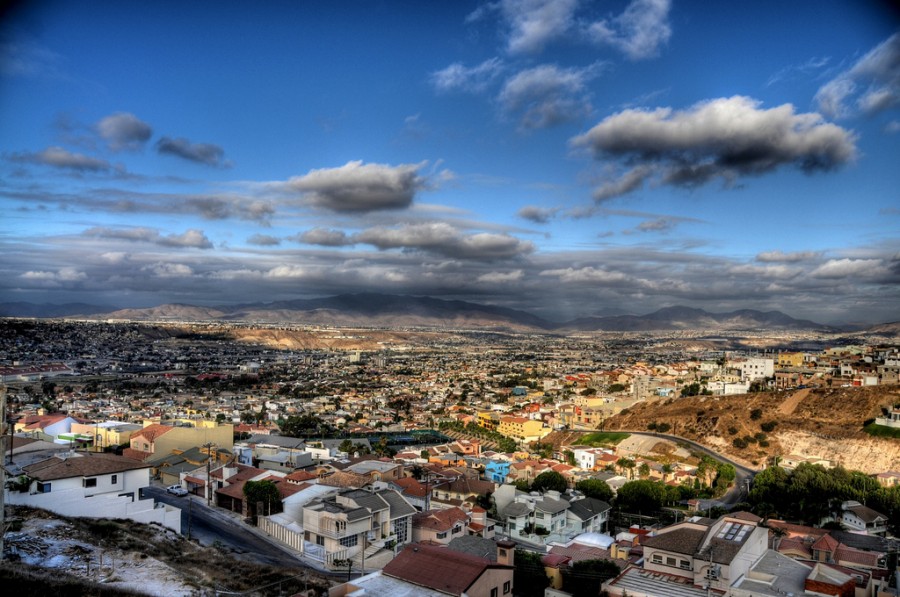
As I looked for my plaid flannel scarf and fur-trimmed moccasins before leaving the house this morning, I had a thought: If only I had a dog-sled . . .
Is this what it means to be Canadian?
No. These are just our romantic notions of how we, as Canadians, endure our biggest hardship: Winter. It’s the stuff movies are made of and what the lumberjacks wear at the Epcot Center.
This thought came to me when reading the Sydney Morning Herald. In it, there was an article about Tijuana — an atypical place where one traveler found the border city in the “midst of a mini-renaissance.” This rebirth meant deep-fried grasshoppers — considered “the past food but the future food, too” — and wine from the Guadalupe Valley (which, according to another to this article, wine has a long history in Mexico, the first one dating back to 1597). Perhaps the alleged danger in the border town prevented people from really getting to know it in the first place.
There seems to be the growing trend: a worldwide revitalization of identity. I can’t help but think that planes and the Internet have something to do with it — allowing us to see places and meet faces that were once too foreign. Through these mechanisms, we are being exposed to what it really means to be of a culture and how symbolic stereotypes may have some truth in them but useful only in theatrics.
As the article poignantly ends, “the best part [of Tijuana]: there’s not a sombrero-wearing waiter or oversized margarita glass in sight.” Right now, I sit in a green, wool sweater and black, sweat pants knowing that what one wears or eats is supposed to be practical, not aesthetic.
The post Travel Trend: Authenticity In Tijuana appeared first on The Expeditioner Travel Site.
]]>The post Amid Drug Violence, Can You Still Travel To Rosarito Beach? appeared first on The Expeditioner Travel Site.
]]>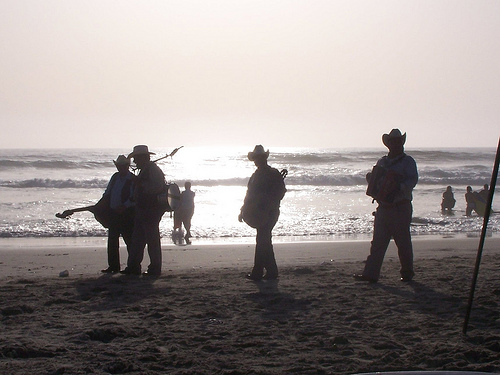
By Ted Hesson
From the car in the outlet mall parking lot in southern San Diego we could see a winding stretch of the border fence; beyond the fence, tawny hills and tough shrubs, terrain that was wilder and more natural than Southern California’s artificially landscaped residential neighborhoods. A giant tri-color flag — green, white, and red — flapped in the breeze. Mexico.
My friend Will and I sat in the bed of his Toyota pickup truck on a Wednesday morning in late July, searching on our phones for information about crossing the border without a passport, since Will had forgotten his documentation at his apartment in San Francisco.
Passport issues aside, we also had some concerns about safety. Will and I were in the midst of a weeklong trip to Southern California in late July, and before reaching San Diego, we had spent some time in Los Angeles and the San Diego suburb of San Marcos. At each stop, I sounded out my friends about a possible day trip down to Rosarito Beach, the 130,000-person Mexican city 30 miles south of the U.S. border. Each friend gave me the same response: Don’t go.
I wasn’t surprised. Back in New York I report on immigration issues, and I had read article after article about the brutality of the drug war in Mexican border cities and towns, and how the violence has escalated in recent years. When I Googled “Rosarito” and “crime,” I found articles about beheadings, executions, and kidnappings.
A decade ago, California residents — gringo and Latino alike — would day-trip down to Rosarito and Tijuana in search of good fish tacos and cheap booze, as well as illicit pleasures, like drugs and prostitution. But over the past few years, increasing news reports about violent crime, occasionally against Americans, caused tourism to plummet. The H1N1 flu scare in 2009 didn’t help matters, either.
After reading so much about the border, though, I wanted to draw my own conclusions.
So, in spite of Will’s passport situation and warnings from friends who said that we “shouldn’t even go through the turnstile” into Mexico, we found ourselves sitting in front of a Ralph Lauren outlet store nearby the border, contemplating whether or not the trip would be possible.
Will’s white Toyota pickup truck is actually decorated with black vinyl stickers so that it resembles a spotted cow (just for decoration/general amusement), and it wasn’t long before a white-haired, white-mustached mall security guard approached us on a golf cart.
I told the guard about our plans to visit Rosarito, and, as it turns out, he actually lives there and commutes to work in San Diego. Hearing the security guard — a staid-looking, retiree-aged gringo — speak about Rosarito, the trip seemed perfectly feasible: Will didn’t need a passport, a California driver’s license would do; we could take Federal Highway 1D along the coast in Mexico for some nice scenery and to avoid the frenzy of Tijuana; and we could buy daily car insurance at a place near the outlet mall for as cheap as $5.
I asked him about the violence. “Yeah, there are killings, but that’s only between the cops and the cartels,” he said. “If you’re not part of that, they’ll leave you alone.”
With that, we thanked him, bought some insurance, and drove towards the border.
***
In March of this year, three U.S. Consulate employees were shot to death in Ciudad Juárez, the Mexican city to the south of El Paso, Texas. Among the victims was a married couple — the wife pregnant — who were shot in their car as their seven-month-old daughter sat in the backseat. In July, Mexican police arrested a gang member linked to the Juárez drug cartel.
After the high profile killings, the U.S. Department of State issued an advisory for US citizens traveling to northern Mexico, citing the escalating drug violence.
But in some ways, the advisory just documented what those living on both sides of the border already knew: Americans believe that Mexican border towns are too dangerous to visit.
Rosarito tourism statistics reflect a fall-off in cross-border tourism: In 2000, Rosarito hotels had a 45.8% occupancy rate, according to Mexico’s Secretary of Tourism. By 2008, that figure had declined to 26%, amid years of steady decline.1
In California, my friends had spoken about nightly news reports of violence along the Mexican side of the border. Such reports are not misleading: Since Mexican president Felipe Calderón took office in December of 2006 and launched his war against cartels, 28,000 people have died in drug-related violence, and some of the brutality, if not directed at tourists, has taken place in Rosarito. The day before our July visit, a Rosarito police commander was shot and killed after allegedly uncovering a human trafficking operation.
In spite of those realities, Rosarito’s mayor, Hugo Torres, has been campaigning to change the city’s image, touting a 21% drop in crime in 2009, and a murder rate that has been more than halved, from 54 killings in 2008 to 26 in 2009. And organizers of tourist events, like the Rosarito-Ensenada 50-Mile Bicycle Ride and last year’s Rosarito Beach Surf Pro AM Competition, have made an effort to stress the relative safety of tourists.
Our first impressions after crossing the border from San Diego into Mexico didn’t exactly inspire confidence in the government and infrastructure.
“This looks how I would imagine Iraq would look,” I told Will as we drove towards the coastal highway to Rosarito, with the border fence to our right. We passed dilapidated shantytowns, shells of buildings, and sun-worn men hiking what appeared to be long distances along the side of the highway. The overcast sky — remnants of what the Southern California set call “June Gloom” –– further darkened the mood.
“Wow, it’s a totally different world over here,” Will said. We had cruised through the border checkpoint without needing to show any documentation, and suddenly found ourselves amid crumbling buildings that would have stood out like a decaying tooth in San Diego.
As we reached the coastal highway, though, the blight eased, replaced by the blue and white surf to the west and cinder block houses and small ranches to the east, with low-lying hills in the backdrop. I was somewhat surprised by the prevalence of new real estate along the 30-minute oceanside trek. Condos and gated developments cropped up along the way, many of them in an unfinished state of construction. Signs advertised new homes and condos for anywhere between $60,000-$100,000. Seemed like a steal, compared to what people were paying in La Jolla and Pacific Beach.
“I wonder if the guy from the mall lives in a place like that?” I asked Will.
We followed signs for Rosarito and meandered our way through the city center, the architecture of which reminded me of Latin American cities that I had visited before, including Oaxaca in the south of Mexico. Along the road we saw two-story body shops, restaurants with hand-painted names, cell phones stores — none of the businesses appeared particularly active.
We started to notice some hotels along the main drag, and soon enough I caught a glimpse of aquamarine water down a narrow cross street. We decided to ditch the truck in a parking lot and head towards the sand.
As we walked down to the beach, we tried to get a sense for the city’s vibe. Part of me had expected there to be an element of the legendary Tijuana party scene, which one particularly revelous family friend had described to me as, “All you can drink for $15; you’re drinking, go outside, throw up, come back in, drink some more . . . Having fun.”
Along the walk to the water, we passed a few establishments that might have facilitated “having fun” at one point in time — two-tier bars that seemed perfect for booty shaking and club jams, but each of them was either empty or closed.
Down by the water, we noticed that the June Gloom had burned off, and it was sunny now with an even breeze blowing across the beach. We also got our first taste of Rosarito’s competitive informal economy. Young men vied for us to come drink at each of their respective bars along the beach, but we thanked them and continued on, opting for a cursory walk along the surf before settling down at a table and chairs.
For a Wednesday, there seemed to be a decent amount of people on the beach — although it definitely wasn’t crowded — but the patrons appeared to be Mexicans or U.S.-citizen Latinos on vacation; we hadn’t seen any other gringos since the outlet mall back in San Diego. Walking for about 20 minutes or so, we saw mostly families on the beach. It reminded me of my childhood vacations in Ocean City, New Jersey, a family resort town that was perfect for parents and kids, but not the sort of weekend binge spot that might have better served our demographic.
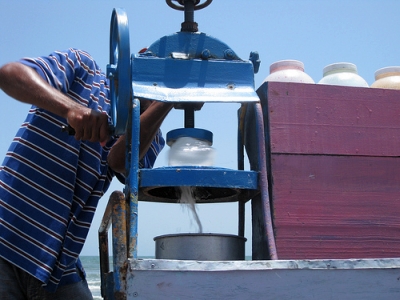 We passed vendors along the beach selling peeled mangos; bags of chicharrones, the orange-colored fried pork rinds; and raspados, the Mexican version of a snow cone. I eventually went to work on an elote, roasted corn on the cob dressed in salt, lime, chili sauce, and grated fresh cheese.
We passed vendors along the beach selling peeled mangos; bags of chicharrones, the orange-colored fried pork rinds; and raspados, the Mexican version of a snow cone. I eventually went to work on an elote, roasted corn on the cob dressed in salt, lime, chili sauce, and grated fresh cheese.
The corn was a start, but we were ready for a more substantial meal. The beachfront bars were all pretty quiet, with only a handful of customers, so we picked a spot based on one waiter’s promise of a $10 bucket of mini-Coronas.
Not surprisingly, the bar was out of mini-Coronas, but we settled for a couple of $3 Pacificos without complaint. As our waiter, Carlos, took our lunch order — fish and carne asada tacos — we also mined him for some information about tourism in Rosarito.
“Most of these bars seem pretty quiet,” I said. “Is that because of the time of year, or are things slower than they used to be?” After some hesitation, Carlos started talking about the decline in tourism.
“There are stories in the news about killings or headless bodies found in Rosarito, but that’s happening in Tijuana and they’re dumping the bodies here,” he said. “They’re never writing stories about the good things that are happening here.”
Like the security guard, Carlos thought that violent crime was only a problem for those tied to police or the cartels. Also, like the security guard, Carlos had lived on both sides of the border: he lived and worked in Reno for more than a decade until he was deported in 1995, leaving his wife and two children in the states. Both he and his wife had remarried.
Some parts of Rosarito that Carlos mentioned didn’t seem so safe. When I asked him if there were any clubs or bars that we should visit, he referenced a place nearby called Bada Bing, where, for a price, you could get a lap dance or have sex. “Anything you want,” he said.
We decided to pass on that option since a) shady strip clubs weren’t on our agenda; and b) heading to a place like that seemed like inviting trouble. A Google search for Bada Bing later turned up an article about the club owner’s 2007 kidnapping and a startling (if unverified) review of the club that mentioned cartels, HIV transmission, and women forced to work under debt bondage. Maybe it was a perfectly legitimate adult entertainment club, but we didn’t have any interest in investigating it.
We ordered another round of Pacificos and Carlos brought the tacos. I had the fish, which matched well with lime and beer. As we ate, a steady stream of vendors approached our table hawking bracelets, cigars, and small trinkets. Will bought a few small wooden turtles from a girl who couldn’t have been more than six or seven years old, and I eventually bartered for some cigars to give to a friend back in San Diego. Although a new vendor seemed to approach every few minutes, no one pushed us to buy anything.
We finished our tacos, but we had some leftovers: refried beans, rice, and chips. One young vendor, maybe 12 years old, stood silently nearby our table until our waiter realized that the boy was waiting for the leftovers. Carlos put the leftovers onto one of our plates, and allowed the boy to sit at the table next to us and finish the meal.
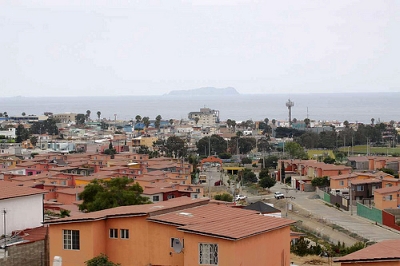 As we settled the check, Carlos told us that it “hurt” to see food go to waste, especially considering the cost of certain food items in Mexico. In the past decade, he said, the prices of certain groceries had risen compared to the prices for the same thing in the US, all this despite Mexico’s weaker currency and higher unemployment. His sentiments echoed what I had learned about food prices during a January research trip to Oaxaca.
As we settled the check, Carlos told us that it “hurt” to see food go to waste, especially considering the cost of certain food items in Mexico. In the past decade, he said, the prices of certain groceries had risen compared to the prices for the same thing in the US, all this despite Mexico’s weaker currency and higher unemployment. His sentiments echoed what I had learned about food prices during a January research trip to Oaxaca.
Still digesting our meal, we walked toward the entrance of a long pier, passing by a group of guys renting horses and all-terrain vehicles. We had watched the horse and ATV crew while we were eating, and they hadn’t had any customers, save one little girl who they guided around on horseback. Not much business.
The pier was busy with local fishermen and families, some watching fathers and brothers set hooks, and some strolling the length of the planks, taking in the expanse of ocean below.
Past the beach, the pier connected to the Rosarito Beach Hotel, arguably the most notable landmark in the city, and we decided to go inside. Originally a hunting lodge and converted to a hotel in 1925 (according to the brochure), the complex included a very green lawn beyond the beach, a swimming pool, ornately tiled hallways, and an antique bar and dining room that resembled 1950s Havana.
I grabbed a drink at the bar and we considered the possibility of staying the night. In the end, we opted to return to San Diego, taking into account a timetable that had us back in L.A. the next day. The hotel seemed like the perfect spot for a weekend getaway, though, and rooms can be found for as low as $100, according to the website.
With the sunlight fading, we hopped into the truck and rerouted up the coast toward the border. Had we stayed the night, we probably would have hung out at the hotel or at one of the other hotels along the beach, for safety reasons.
Our trip wasn’t over just yet, though, as Will made a wrong turn near the border that deposited us in downtown Tijuana. Amid the confusion, he actually drove the wrong way down a one-way street, which gave us the opportunity to meet one of TJ’s infamous police officers.
As the officer disembarked from his SUV and approached our truck, a few thoughts crossed my mind: Will didn’t have his passport and we had almost no money in the event that we needed to pay a mordida, (a bribe, or, literally, a “little bite”). I had no interest in sampling a Tijuana jail cell.
The officer asked Will for his driver’s license as we tried to explain, in a mix of English and Spanish, why he had driven the wrong way down the street. After looking at Will’s license for a moment, the officer pointed to one of the cow spots on the truck. “¿Es una vaca?” he asked.
The cow question broke this ice, and the officer then gave us directions to San Diego. No bribe, no jail cell; overall a pleasant, if nerve-wracking, experience.
In his rear-view mirror, Will watched the cop return to his car. “That guy was carrying some sort of assault rifle.” I hadn’t noticed.
Aside from worries about violence, my friends had also cited the long lines to return to the US as a deterrent for crossing the border, and the congestion on this particular evening was no different. While we inched our way towards the states, a parade of vendors passed by our truck: fresh orange juice, beach towels, a ceramic depiction of The Last Supper. I bought some churros, for $0.75.
Just as on the beach, most vendors strolled up and down the roadway advertising their wares, but not pushing us to purchase anything. With that in mind, I was somewhat surprised when one bracelet-selling boy, maybe six years old, stopped at my window after I said, “No, gracias.” He stayed there for a minute or so, and I felt uncomfortable — a child his age, weaving between cars, hawking cheap merchandise. After a minute or so, he walked away.
We were a bit nervous at the border. I was fairly certain that U.S. citizens were supposed to carry a passport to Mexico (they are), so I was curious how this might unfold (i.e., would they usher us into a windowless room while agents dismantled the cow truck looking for packs of cocaine). We explained our situation to the agent, how we had been told that a California license would suffice for U.S. entry. After some questions from the agent, including Will’s place of birth, we passed into San Diego.
We felt like the day trip was a success, even if it was only a limited taste of life on the other side of the border. We hadn’t experienced any problems with crime or violence, thankfully, but I knew that if I returned, I would definitely employ the same sense of caution.
One casualty of the trip was that the truck had gotten a bit dusty, which I noticed the next morning as we left San Diego for LA. In the dust of the passenger’s side door, however, was a message, apparently written by the six-year-old vendor who had paused at my door while we sat in traffic at the border. In playful scrawl, it read, “VACA VACA VACA.”
By Ted Hesson

[Rosarito Beach Mexico by Kiara Ramirez/Flickr; Raspado by Lauren Arcer/Flickr; Rosarito by Ted Hesson/Flickr]
Ted Hesson is the online editor of Long Island Wins, a website devoted to immigration news, policy, and culture in Nassau and Suffolk counties.
The post Amid Drug Violence, Can You Still Travel To Rosarito Beach? appeared first on The Expeditioner Travel Site.
]]>The post Why Haven’t More Travelers Heard Of Guanajuato? Maybe That’s Good . . . appeared first on The Expeditioner Travel Site.
]]>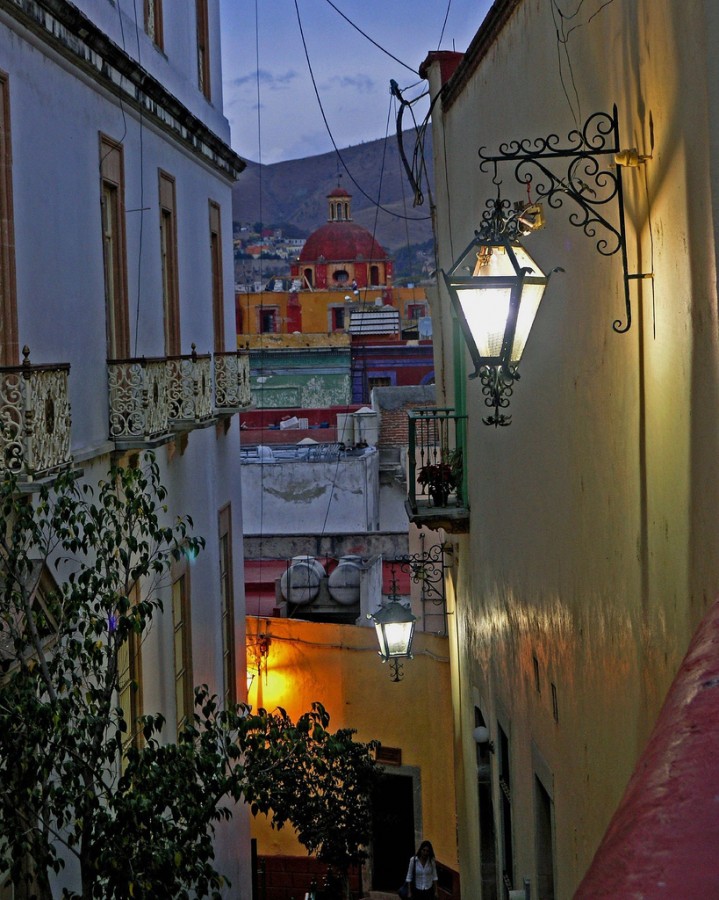
For some, global cities have lost their luster. As we travel from New York City to Paris to Tokyo to Buenos Aires, some travelers have found that each city is, as the Taiwanese that I met liked to say, “same, same, but different.” In most urban centers you can find major corporations, like Starbucks or McDonald’s, that, for better or worse, ease the cultural transition. Yet, the traveler’s zeitgeist seems to be shifting.
Although a city holds the convenience and quickness that certain travelers might want, those that crave a cultural clash seem to be drawn to the outskirts or even the middle of nowhere. I have come across more and more articles about this phenomenon, including this recent one in the San Francisco Chronicle.
In it, Spud Hilton takes us to Guanajuato, a small city that is not well known, yet is only a little over a hundred miles from Mexico’s major cities, Guadalajara and Mexico City. He describes how it seemed to have been designed for wandering through its streets, past corner tables in small bistros where cervezas and tequila are rampant, and where five-member mariachi bands will congregate near you while you eat and smooth your soul (or was that the tequila?). Guanajuato is also home to mummies, is Diego Riviera’s birthplace, and did I mention how it exudes a Spanish essence? Oh my.
Reading about other people’s curiosity of remote places makes me wonder about this shift. It seems as though we want to see something different, something painfully and splendidly and authentically a world apart from our own culture. We are used to seeing cell phones and billboards and galleries hosting up-and-coming artists. But some travelers — especially those that travel the most — are fascinated about the places that are untouched by the modern Western hand. Those places offer a glimpse into a country’s story — either its recent or not-so-recent past. Some want to see something more real. But, how long will this last?
With the porosity of borders, despite international efforts at controlling it, the world wide web of cultural practices and language are spinning stronger strings. With the media, we are able to connect to one another and share our cultural history and diversity. It makes me wonder what will happen next? whether travelers will dive into the depths of nature in an attempt to see how humans are as themselves?
For me, the motives behind traveling just got more interesting.
By Brit Weaver

About the Author

Toronto born and based, Brit is an avid leisure cyclist, coffee drinker and under-a-tree park-ist. She often finds herself meandering foreign cities looking for street eats to nibble, trees to climb, a patch of grass to sit on, or a small bookstore to sift through. You can find her musing life on her personal blog, TheBubblesAreDead.wordpress.com.
The post Why Haven’t More Travelers Heard Of Guanajuato? Maybe That’s Good . . . appeared first on The Expeditioner Travel Site.
]]>The post Lookin’ For A Little Magic In Mexico appeared first on The Expeditioner Travel Site.
]]>
Okay, you may have traveled to some “rustic,” “off-the-beaten-path,” or, dare I say, “quaint” towns during your travels, but how many of them can you say are actually denoted as being “magic”? And not by some made-up huckster like J.K. Rowling or Rick Steves, but somebody credible, like the Mexican Government!
As Jaunted reported back in June, Mexico’s Ministry of Tourism is in the process of spending $150 million to restore certain villages across the country, which will include makeovers for museums, convents and churches, all in an effort to draw more visitors to one of these lucky 35 Pueblos Magicos.
This week, the SF Chronicle hit up one such enchanted village, Valle de Bravo, a town known not so much for its local charm, but for its influx of wealthy Mexicans that head there for weekend getaways. But, as the paper notes, it’s not all bad. “Yes, Valle has been discovered by the Travel + Leisure contingent, but budget travelers who don’t require resort-style pampering will find plenty of affordable places to lay their heads within walking distance of the square.”
Nearby, travelers can also visit Taxco, known as a silver craft center, and further east (okay, quite a bit east), in the Yucatan is Izamal, the “yellow city” (because, well, everything’s yellow), where travelers can visit local craftsmen, Mayan pyramids, and the famed convent of San Antonio de Padua (where thousands of miracle seekers descend every year).
No word yet if nearby Cancun will get the anointed title of “magic” — something abut Senor Frogs not being authentic enough.
The post Lookin’ For A Little Magic In Mexico appeared first on The Expeditioner Travel Site.
]]>The post A Community Comes Together In Mexico appeared first on The Expeditioner Travel Site.
]]>
by Katherine Fisher
I showed up around 10 a.m. and the buzz was already going, loudly. When I arrived, the cement truck was already there, ready to unload as much concrete as we needed. The kids were amazed at the sight of this huge, monstrous truck, and they were running around with unbridled excitement and more smiles than you can imagine. The whole community, over 250 volunteers in all, were here, joined together to create a safe, eco-friendly playground for kids.
The whole endeavor was being spearheaded by Nicole Swedlow, Founder of entreAmigos in San Pancho, who had teamed up with Molly Fisher (my Sister), myself and the of crew of our organization, Destination:PEACE, for today’s project. Our organization is a voluntourism organization in Mexico that allows travelers to combine volunteering with the experience of exploring the culture of the country (and a little yoga and authentic Mexican food mixed in on the side).
Volunteers had gathered for the day, using recycled and reused materials to build a safe space for kids to play. Not only were the kids making a new playground, but they were also learning about the basics of recycling. I walked around in amazement at the sight of the entire community coming together. Everyone was wearing the bright, green-colored T-shirts that had been given out, and I couldn’t help but notice the multitude of smiling faces and dirty hands around me, not to mention the camaraderie by everyone involved. I felt like I was in a movie. The wheelbarrows were in motion and the buzz continued.
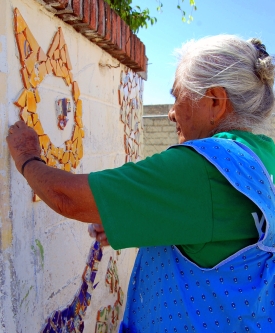
Everyone was helping, including: Juan, Junior, Elli, Ana, Gaby, John, Elliott, Lalo, Molly, Gerardo, Miguel, Carlos, Christian, Nikhol, Nicole, Nova, Chito, Dahlia and many more; an unforgettable sight to see so many familiar faces coming together for a common goal. I couldn’t help but pick up my camera and begin taking pictures.
I eventually put my camera down and dove into the dirty work myself. For some reason I was drawn to the tires that were being used to create stools for the outdoor tables. To construct the stools we had to hammer in water line pipes to the tops of the tires — this is where one sits — then we had to dig the holes where we would anchor the tires. We measured things, we rolled the tires, we broke nails (at least I did), and the end result, after many long hours in the sun, was euphoric. A safe place for the kids to eat lunch, play games and study.
During this whole time there were kids and adults painting huge murals, the color and beauty of which were truly a sight to see. I was also intrigued by the plastic bottle project where the volunteers were taking bottles, cutting them up and creating fan-like shapes to stick into the fence. Of course the plastic bottles are beautifully painted so they create a flower essence — a great home art project. Also, all around, friends were painting benches, chairs and tables.
Then, when it was time for lunch, without asking, one of the local neighbors near the school opened her house up and invited in the entire team. While we had been working, the neighbor had prepared delicious, fresh ceviche — a specialty in this part of the country — along with fresh jimaica juice to wash it all down with.
Despite having done countless of similar projects with my group, I kept thinking throughout the day how this particular experience was one of my favorites. I may not have another day quite as memorable as this one, but that was fine with me, this was just the beginning of what were sure to be many more wonderful experiences.

Founded in 2005, PEACE Mexico, works hand-in-hand with communities in Mexico to provide holistic education combined with community action programs that enable people to improve their quality of life, as well as, their financial stability. English classes, after-school programs, recycling initiatives, and a free mobile spay/neuter clinic are among the various projects.
Destination:PEACE was born out of an idea by sisters Molly Mendez Fisher and Katherine Fisher to couple volunteer opportunities with the amazing landscape that the Bay of Banderas offers as a vacation destination. During a Destination:PEACE Volunteer Vacation, guests will experience another culture while making a difference in the lives of others: children, women, families, animals and the environment.
A volunteer will help raise awareness and contribute to the overall love, community and hope to the people and animals affiliated non-profit organizations in Mexico. Destination:PEACE gives back a portion of their proceeds to the non-profit in order to further their mission.
Katherine has combined her background in business and sales with her passion for Yoga and has committed herself full-time to building, organizing and promoting Destination:PEACE. She hopes to one day see Destination:PEACE grow from infancy to maturity and become self-sustainable.
For more information please visit www.destinationpeacemexico.com
The post A Community Comes Together In Mexico appeared first on The Expeditioner Travel Site.
]]>